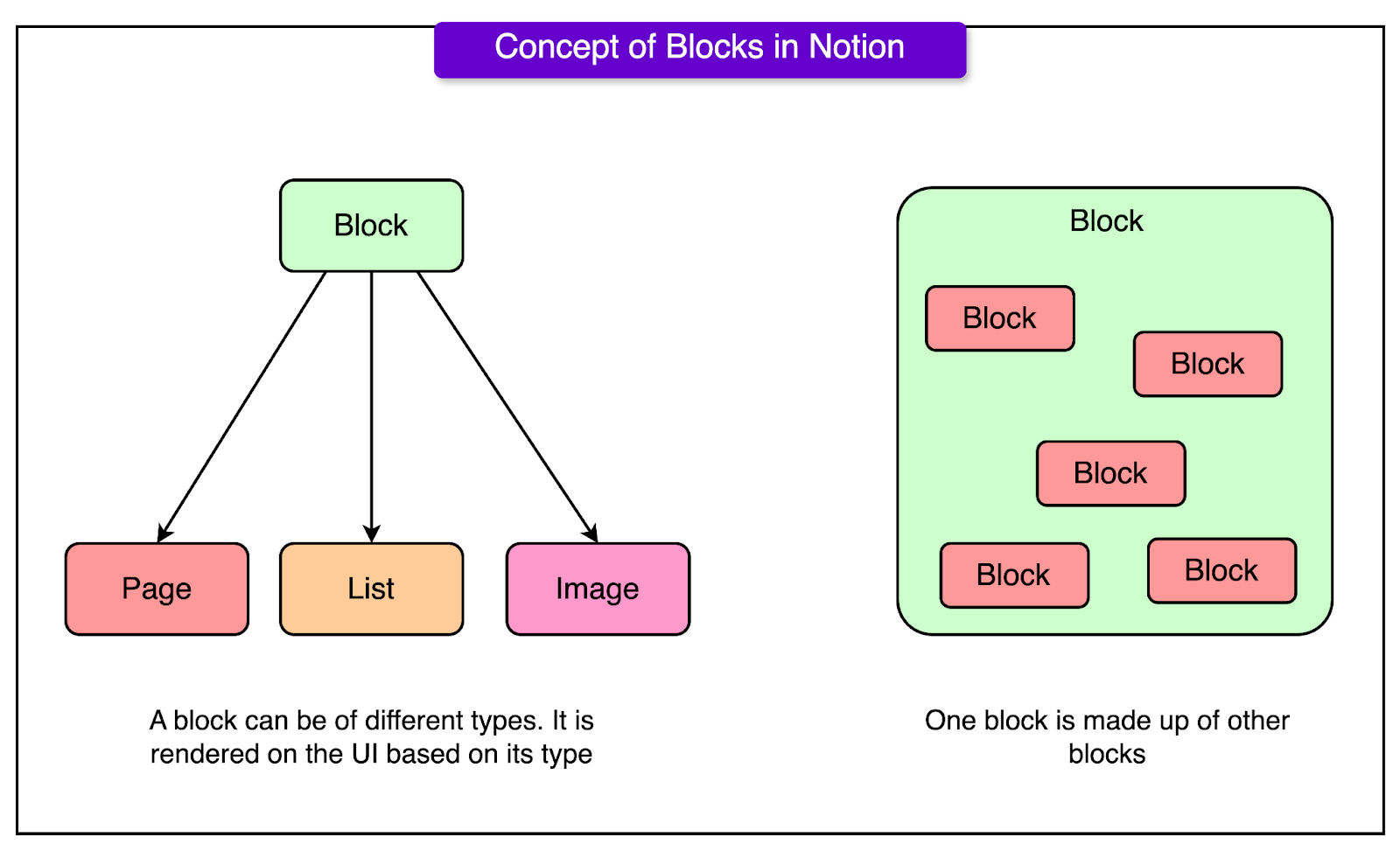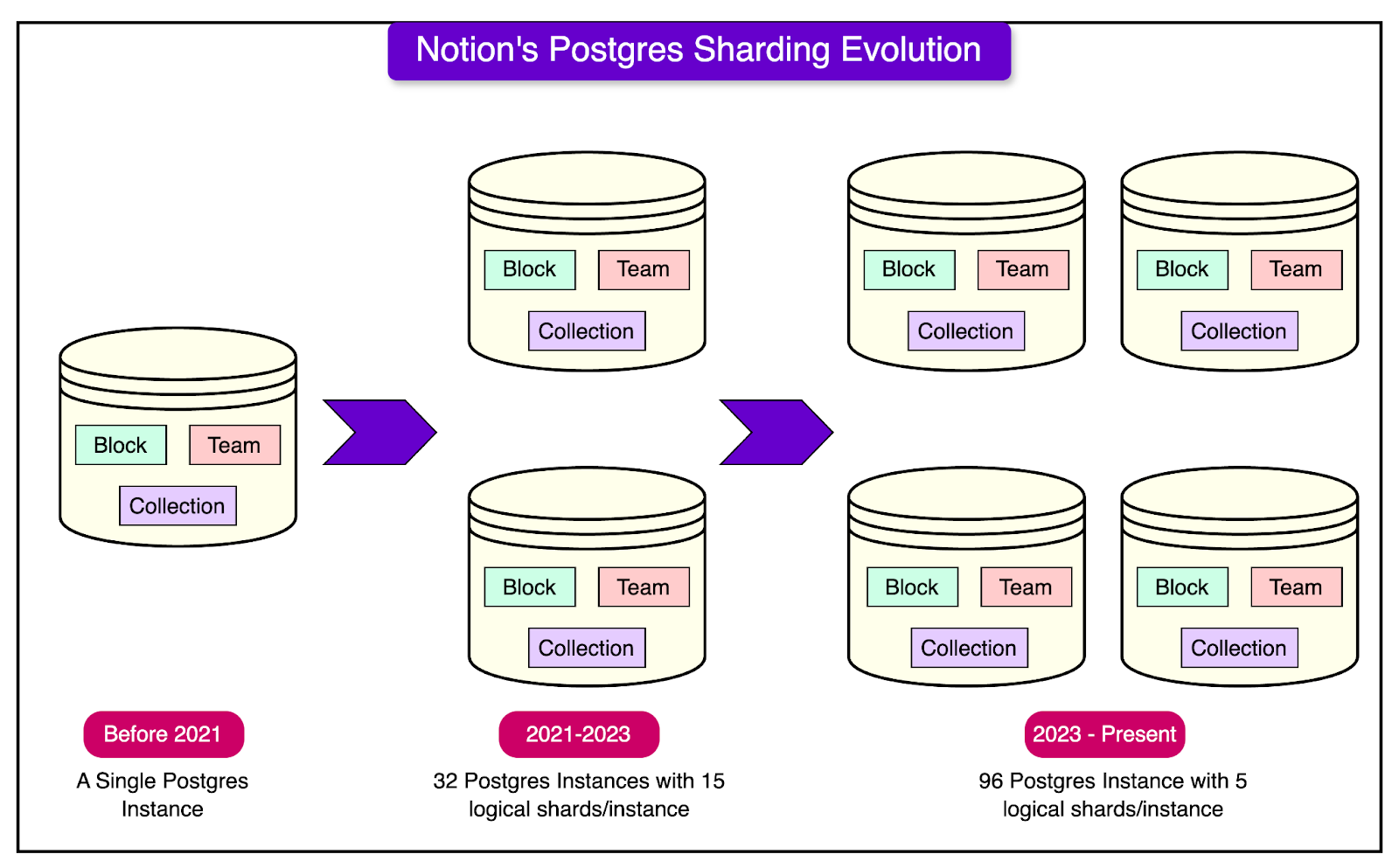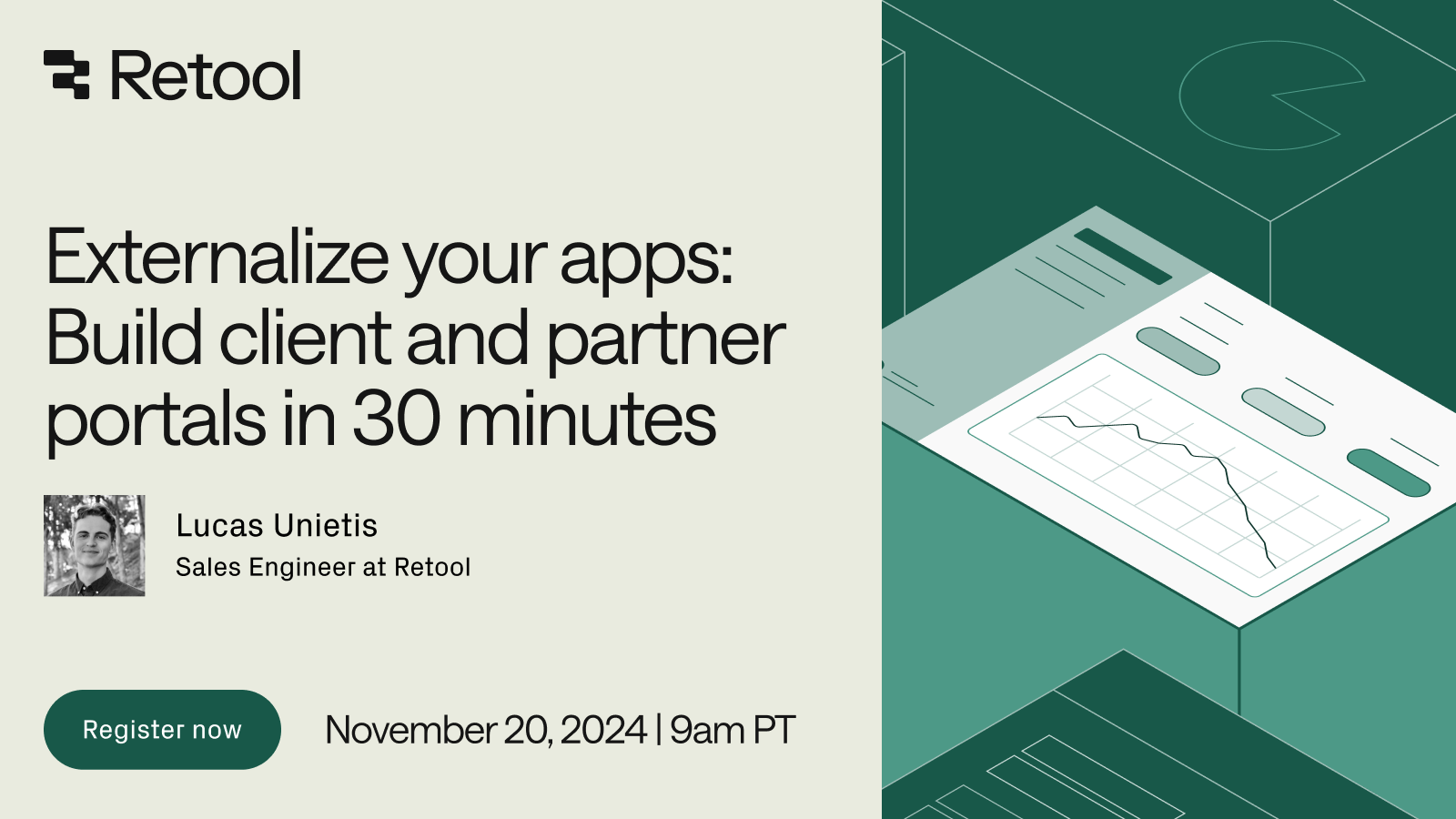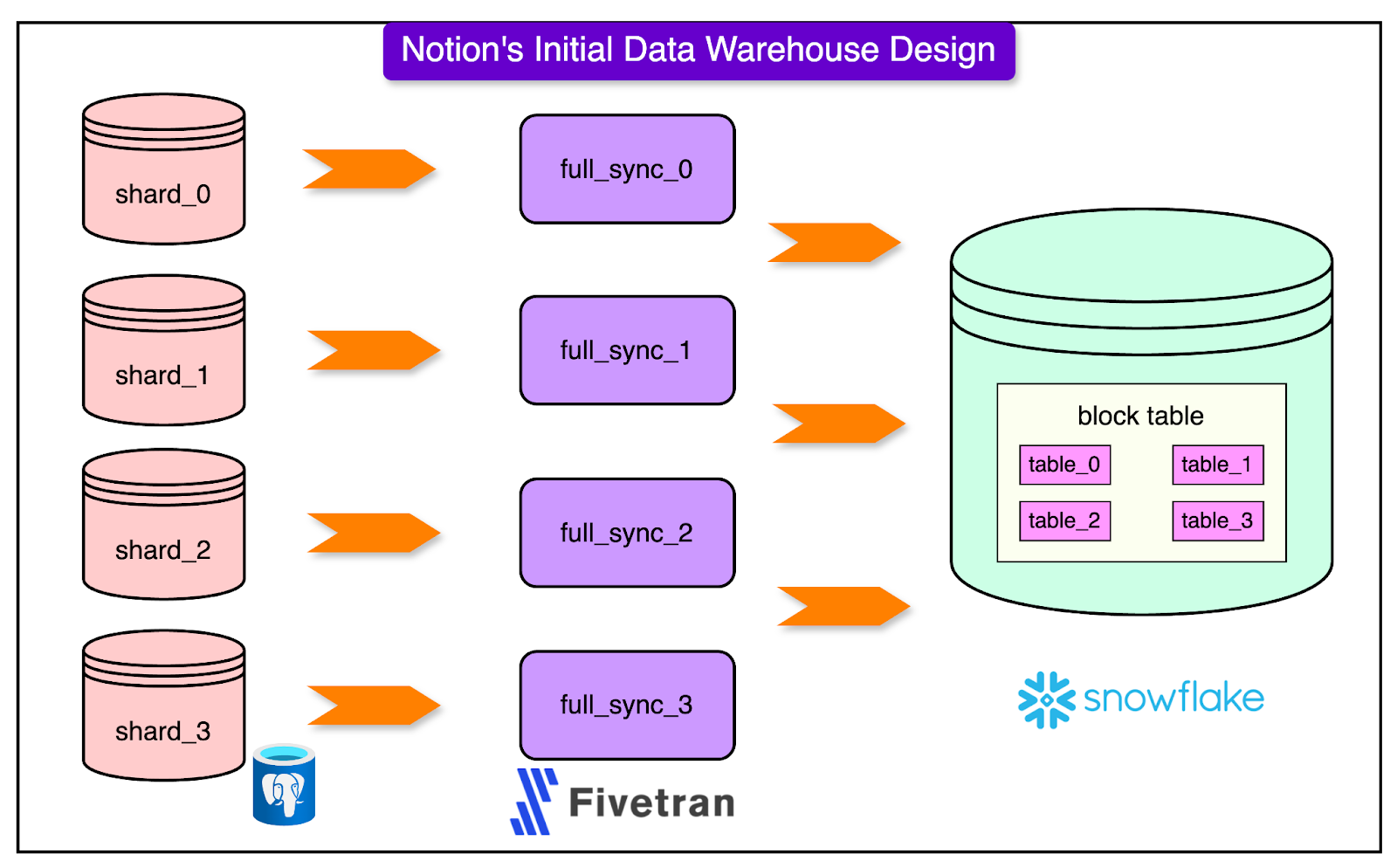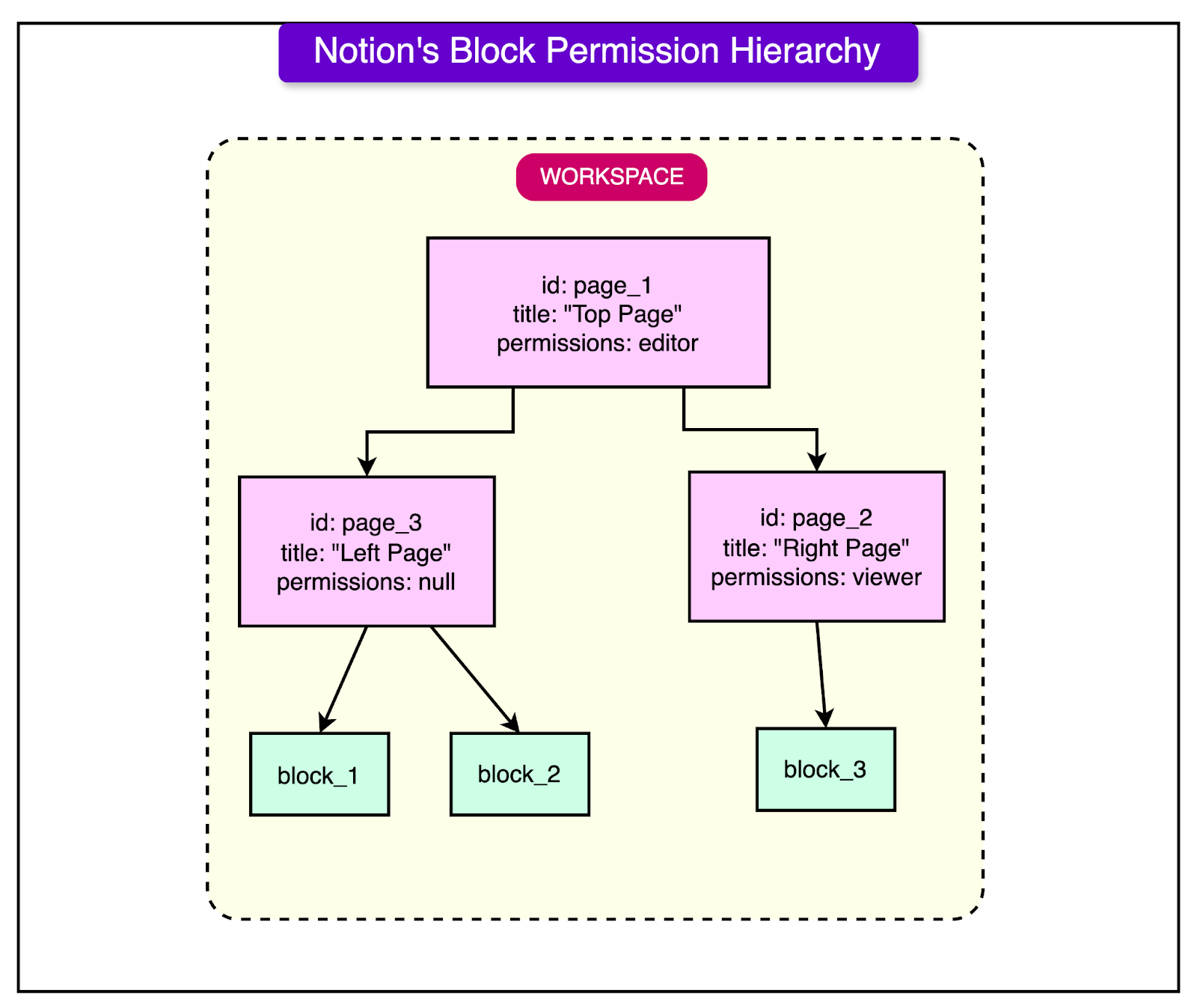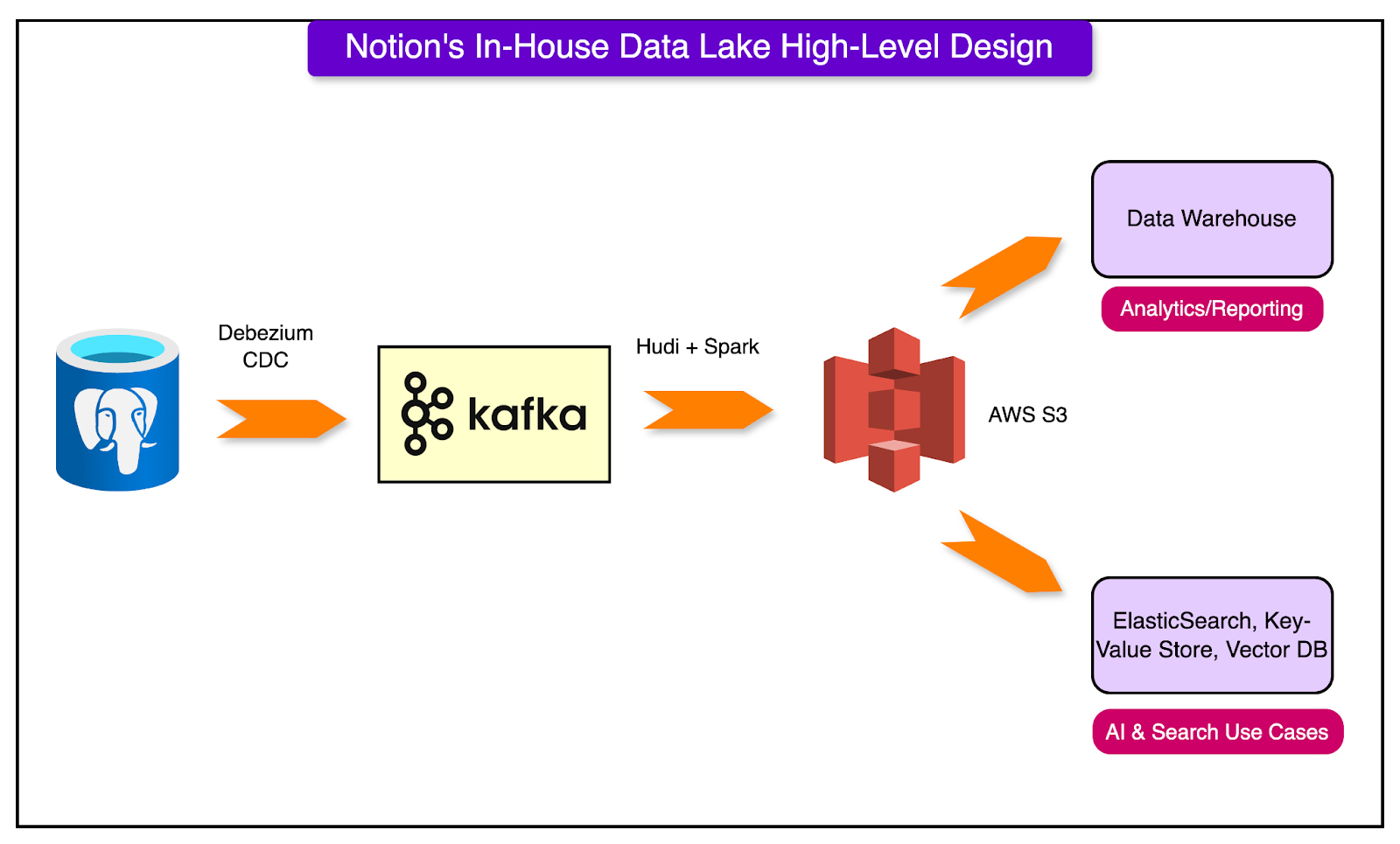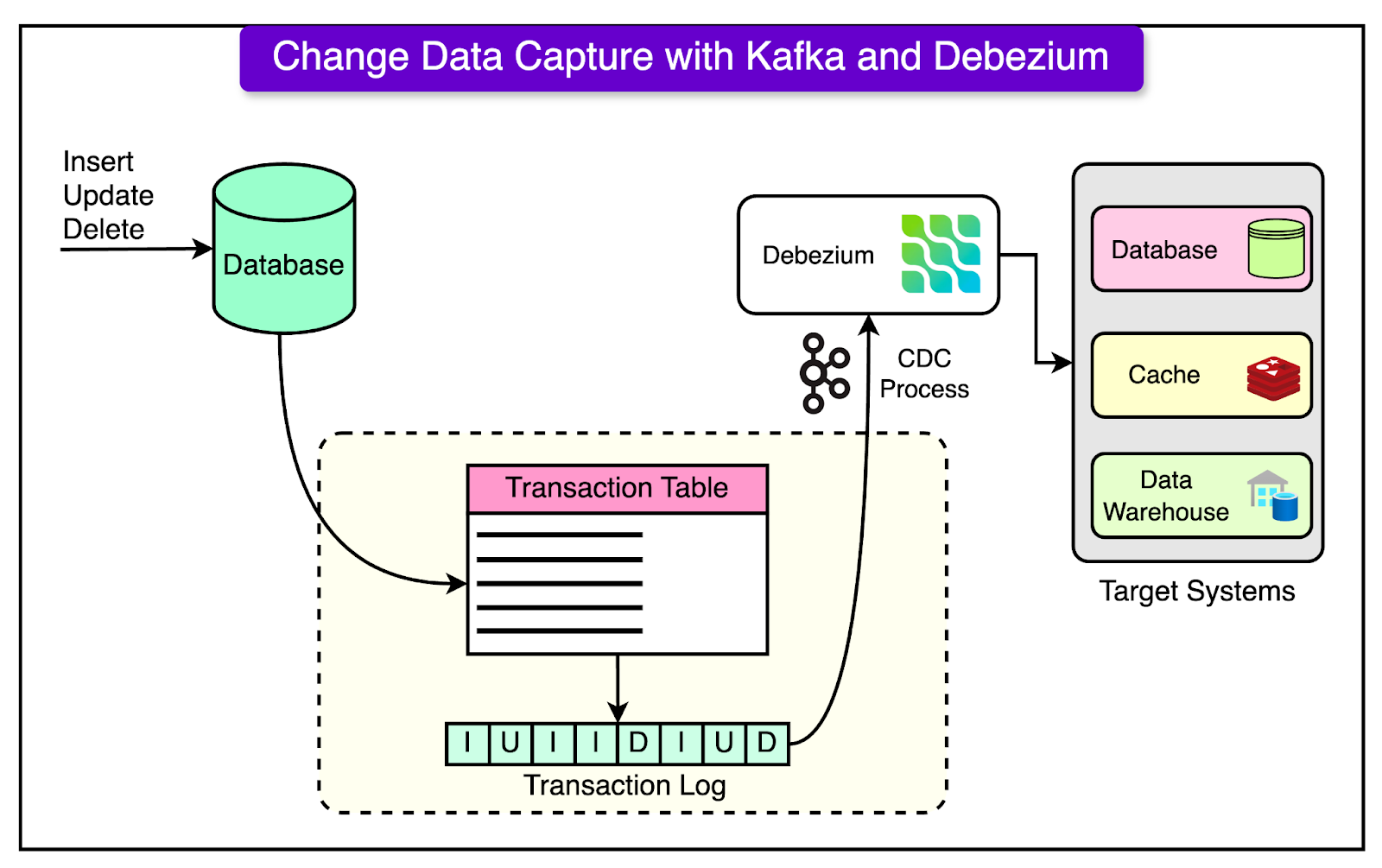Archives
- By thread 5368
-
By date
- June 2021 10
- July 2021 6
- August 2021 20
- September 2021 21
- October 2021 48
- November 2021 40
- December 2021 23
- January 2022 46
- February 2022 80
- March 2022 109
- April 2022 100
- May 2022 97
- June 2022 105
- July 2022 82
- August 2022 95
- September 2022 103
- October 2022 117
- November 2022 115
- December 2022 102
- January 2023 88
- February 2023 90
- March 2023 116
- April 2023 97
- May 2023 159
- June 2023 145
- July 2023 120
- August 2023 90
- September 2023 102
- October 2023 106
- November 2023 100
- December 2023 74
- January 2024 75
- February 2024 75
- March 2024 78
- April 2024 74
- May 2024 108
- June 2024 98
- July 2024 116
- August 2024 134
- September 2024 130
- October 2024 141
- November 2024 171
- December 2024 115
- January 2025 216
- February 2025 140
- March 2025 220
- April 2025 233
- May 2025 239
- June 2025 303
- July 2025 181
-
Speedrunning Guide: Junior to Staff Engineer in 3 years
Speedrunning Guide: Junior to Staff Engineer in 3 years
This is a guest newsletter by Ryan Peterman, who was promoted from Junior to Staff Engineer in 3 years at Meta.͏ ͏ ͏ ͏ ͏ ͏ ͏ ͏ ͏ ͏ ͏ ͏ ͏ ͏ ͏ ͏ ͏ ͏ ͏ ͏ ͏ ͏ ͏ ͏ ͏ ͏ ͏ ͏ ͏ ͏ ͏ ͏ ͏ ͏ ͏ ͏ ͏ ͏ ͏ ͏ ͏ ͏ ͏ ͏ ͏ ͏ ͏ ͏ ͏ ͏ ͏ ͏ ͏ ͏ ͏ ͏ ͏ ͏ ͏ ͏ ͏ ͏ ͏ ͏ ͏ ͏ ͏ ͏ ͏ ͏ ͏ ͏ ͏ ͏ ͏ ͏ ͏ ͏ ͏ ͏ ͏ ͏ ͏ ͏ ͏ ͏ ͏ ͏ ͏ ͏ ͏ ͏ ͏ ͏ ͏ ͏ ͏ ͏ ͏ ͏ ͏ ͏ ͏ ͏ ͏ ͏ ͏ ͏ ͏ ͏ ͏ ͏ ͏ ͏ ͏ ͏ ͏ ͏ ͏ ͏ ͏ ͏ ͏ ͏ ͏ ͏ ͏ ͏ ͏ ͏ ͏ ͏ ͏ ͏ ͏ ͏ ͏ ͏ ͏ ͏ ͏ ͏ ͏ ͏ ͏ ͏ ͏ ͏ ͏ ͏ ͏ ͏ ͏ ͏ ͏ ͏ ͏ ͏ ͏ ͏ ͏ ͏ ͏ ͏ ͏ ͏ ͏ ͏ ͏ ͏ ͏ ͏ ͏ ͏ ͏ ͏ ͏ ͏ ͏ ͏ ͏ ͏ ͏ ͏ ͏ ͏ ͏ ͏ ͏ ͏ ͏ ͏ ͏ ͏ ͏ ͏ ͏ ͏ ͏ ͏ Forwarded this email? Subscribe here for moreLatest articles
If you’re not a subscriber, here’s what you missed this month.
To receive all the full articles and support ByteByteGo, consider subscribing:
This is a guest newsletter by Ryan Peterman, who was promoted from Junior to Staff Engineer in 3 years at Meta.
Once you land that first software engineering job, the next big question becomes: how do you get promoted? Many engineers fall into the day-to-day routine of writing code without a clear idea of how to grow their careers.
This happened to me. At my first job at Amazon, I landed code without knowing what I could do to grow my skills. I left that job within eight months because I felt I wasn’t growing as an engineer. Three years later, I made it to Staff Software Engineer at Instagram after tons of mentorship. Early on, I learned that being good at coding wasn’t enough to get promoted; you have to think strategically about your career and often need to develop new behaviors to move up.
In this article, I’ll share everything that helped me fast-track my way up the ladder, from developing the right mindset to making key moves that many overlook. Even if rapid growth isn’t your goal, this guide has learnings for all tech career paths.
In this guide:
Software Engineering Levels
An Algorithm for Promotion
Junior (IC3) → Mid-level (IC4)
Mid-level (IC4) → Senior (IC5)
Senior (IC5) → Staff (IC6)
Luck & Parting Words
Software Engineering Levels
Note: “IC” = “Individual Contributor”

Continue reading this post for free in the Substack app
Like
Comment
Restack
© 2024 ByteByteGo
548 Market Street PMB 72296, San Francisco, CA 94104
Unsubscribe
by "ByteByteGo" <bytebytego@substack.com> - 11:35 - 14 Nov 2024 -
RE: Dear Team. Important Updates on Your Recent Request .
Esteemed Colleagues,We sincerely appreciate your patience, and we apologize for the time it took to respond to your prior message. Your inquiry is important to us and are happy to share the required information with you.Attached here is a screenshot that includes important details related to your inquiry. Please take the time to review it to familiarize yourself with the key details for a complete understanding of the information.If you have any doubts or need further assistance, please don't hesitate to reach out. We are here for you and ready to provide any assistance you may require.With gratitude,
Paul Fisher
Unity Enterprises, LLC
+1 (212) 059-63-32
by "Paul Fisher" <truner.mad@gmx.com> - 08:19 - 14 Nov 2024 -
How to get more website traffic from Google
How to get more website traffic from Google
Hi there,
I wanted to reach out as I believe I could help get Your Telecoms Consultant found on Google.
I’ve recently helped one of my customers in an incredibly competitive industry go from page 4 to page 1 on Google in just 4 months.
Search engines like Google process billions of daily searches.
If you want to ensure Your Telecoms Consultant is easily found, I can help you.
As one of the first UK digital agencies to pioneer SEO, Infoserve has plenty of data and insights to ensure you’re consistently ranking ahead of your competition.
If you would like a free, comprehensive SEO audit and no-obligation personalised quote, email me back or give me a call on 0800 089 0879.
Thank you,
Matt Budd
Digital Marketing Consultant
0800 089 0879
infoserve.com
P.S. “We have used Infoserve for the past 12 months and they have improved our online presence massively using pay-per-click, SEO and blogging. The monthly performance reports are excellent coupled with online meetings which make the relationship more personable and engaging. I would not hesitate in recommending this company and we will continue to utilise their services.”
Infoserve Ltd, Southside Aviation, Leeds Airport, LS19 7UG. Registered in England No. 04209122
We have sent this email to info@learn.odoo.com, having found your company details online, as we believe our digital marketing services may be of legitimate interest to your business. If you would no longer like to get emails from us you can stop them here.
by "Matt Budd" <matt@infoserve.uk> - 07:04 - 14 Nov 2024 -
Build your own API platform!
Build your own API platform!
Join our December 5th webinar to learn API essentials, design tips, and open-source tools to get started.Hi Md Abul,
With APIs now constituting 71% of all web traffic, the need for an API platform has never been greater. But how do you design and build one? Should it be proprietary or open source? And what about the whole buying versus building debate?
Join our webinar on 5th December to discover how you can embrace open standards and open source tools to build a composable API platform. We’ll show you:- Steps to build a scalable, flexible API platform
- Key components and KPIs
- Design challenges and pitfalls
- The value of OAuth, OTel and OpenAPIs
We’ll also run through how to build an API platform using Tyk, Grafana and Keycloak, giving all the insights you need to get started.
📅 Date: December 5th, 2024
🕙 Time: 10 am EDT/3 pm GMT
📍 Location: Zoom
Speakers: Budha Bhattacharya (Developer Advocate), Sedky Haider (Director, Solution Architecture)
Speakers

Budha Bhattacharya
Developer Advocate
Sedky Haider
Director, Solution ArchitectureWant to know more and reserve your spot? You can find full details here.
See you soon,
Budha and teamTyk, Huckletree 199 Bishopsgate, Broadgate, London, City of London EC2M 3TY, United Kingdom, +44 (0)20 3409 1911
by "Budhaditya Bhattacharya" <budha@tyk.io> - 06:15 - 14 Nov 2024 -
Dive into the data in the 2024 Observability Forecast
New Relic
 October 2024
October 2024The 2024 Observability Forecast Report is here! The most successful companies are turning to observability to ensure business continuity and customer loyalty. Learn why more organizations are making observability a priority in the 2024 observability forecast.
Download now 
Named a Leader in the 2024 Gartner® Magic Quadrant™ for DEM
We’re excited to share that New Relic is furthest in vision and positioned as a Leader in the 2024 Gartner® Magic Quadrant™ for Digital Experience Monitoring (DEM).
New Relic Now: Streaming On Demand
Observability is evolving fast. Join us at New Relic Now—your path to Intelligent Observability in the new AI era.
Useful reads ChatGPT o1: Accelerated success in observabilityNew Relic Intelligent Observability platform accelerates issue detection, root cause analysis, and continuous performance monitoring with ChatGPT o1.
ChatGPT o1: Accelerated success in observabilityNew Relic Intelligent Observability platform accelerates issue detection, root cause analysis, and continuous performance monitoring with ChatGPT o1.
The observability challenge for media streamingLearn how to track test-related events, improve code coverage insights, and optimize end-to-end test performance using New Relic.
Upcoming Events Meet us at Booth B80: Tech for Retail Paris
Meet us at Booth B80: Tech for Retail Paris
Visit us on November 26-27 at Paris Expo Porte de Versailles for live demos, tailored advice, and exclusive giveaways. Join our Happy Hour on November 26, 4-6pm, for networking and fun. Don’t miss out on innovation and insights—see you at Booth B80!Event Hours: 9am – 6pm
New Relic University online workshops
Catch our recent New Relic workshops on-demand. These trainer-led workshops with hands-on labs will help you up-level your observability skills.
New Relic End-of-Life Updates
Azure SQL database integration through API Polling (1 December)
- We’re ending support for the Polling API that can report data to the Azure SQL Database integration.
- If you’re using the Polling API to report data to the Azure SQL Database integration, we recommend that you migrate to the Azure Monitor integration
- Only customers who fetch data with the Polling API for Azure SQL Database integration are affected.
- See here for more information.
Need help? Let's get in touch.



This email is sent from an account used for sending messages only. Please do not reply to this email to contact us—we will not get your response.
This email was sent to info@learn.odoo.com Update your email preferences.
For information about our privacy practices, see our Privacy Policy.
Need to contact New Relic? You can chat or call us at +44 20 3859 9190.
Strand Bridge House, 138-142 Strand, London WC2R 1HH
© 2024 New Relic, Inc. All rights reserved. New Relic logo are trademarks of New Relic, Inc

by "New Relic" <emeamarketing@newrelic.com> - 05:01 - 14 Nov 2024 -
What is wind energy?
Only McKinsey Perspectives
Improvements in offshore wind
by "Only McKinsey Perspectives" <publishing@email.mckinsey.com> - 01:19 - 14 Nov 2024 -
IPC A610H ACCEPTABILITY OF ELECTRONIC ASSEMBLIES TRAINING
IPC A610H ACCEPTABILITY OF ELECTRONIC ASSEMBLIES TRAINING
This program can be specially tailored and customized to meet your training objectives
Kindly find above attached for the full brochure for this program
We hope you find it informative and interesting, and we look forward to seeing you soon
(SBL Khas / HRD CORP Claimable Course)
2 Days In-House Program By Gobalan
INTRODUCTION:
These 2 days training program will provide the participants with knowledge and skills required in understanding all aspects of IPC A610H standards including product classifications, components and solderability accept / reject criteria, defects categories in detail technical perspective.
It gives the participants the knowledge, skills and competence required to negotiate better with QC and customers during a dispute, disagreement or product training on the standards established for the accept / reject criteria conditions.
PROGRAM OBJECTIVE:
After the 2 days training, participants shall enhance knowledge and skills in the following fields:
- Know IPC A610H new inclusions.
- The terminologies, terms and definitions.
- IPC standards and it’s requirements
- Product classifications.
- Form, Fit and Function.
- Accept and Reject criteria of electronic components and solderability in interconnects, packaging and electronic circuits.
- Documents applicable to IPC A610H.
- Expose to close and open book tests, assessment and qualification.
- Establish certification thro qualifying Pre and Post Tests.
- Get qualified in IPC A610H with great negotiating skills with customer on return goods criteria.
- Able to train operators in process standards to maintain product quality.
WHO SHOULD ATTEND:
Engineers, Supervisors, Technicians, Line Trainers, Inspection Operators, Rework Operators, and QA Inspectors.
TRANING METHODOLOGY:
Participants will be involved in 60% lectures, 20% PCB components practical and 20% group and team discussions with close book and open book exams.
Day 1: 9.00am to 5.00pm
- Assessment: Pre Test
- Exercise 1 – List down all defects encountered in products and processes that affects quality.
- What are standards? Who set standards? What are the available standards?
- Product classifications – Class 1, Class 2 and Class 3
- Introduction to IPC A610H (What, Why, Who, When, How).
- IPC 610 standard and family of standards
- New inclusions – General discussion and summary.
- Applicable guiding documents – IPC T50 / IPC J – STD – 001
- Introduction to SMT technology – Loader, Paste printing, Pick and place, Reflow and Wave soldering
- Introduction to Quality Standards – 4Ws / 1H requirement.
- Form, Fit and Function – 3Fs
- Exercise 2: Product classifications – Class 1, 2 and 3. Identify defects and classify.
- Explain Target, Accept, Defect and Process Indicator via Dart Board Principles.
- What is Reject and Acceptance criteria? What is Tolerance?
- Exercise 3: What is a Target, Accept, Defect and Process Indicator conditions?
- ESD and IPC 610H guidelines.
- Handling electronic assemblies – Components, PCBs and General discipline
- Hardware requirement – Nuts, bolts, washers, heat sinks, mounting plates
- PTH and SMD components
- Exercise 4: Soldering and Solderability – Quality and Standards
- Soldering - Terminal connections
- Soldering – PTH / Through hole components technology
- Practical: PCB Assembly – Identify defects
Day 2: 9.00am to 5.00pm
- Revise Day 1 topics.
- Exercise 1: Importance of SMT soldering in process operations.
- Soldering – SMD components / Surface mount assemblies
- Significance of soldering – Manual, Reflow, Wave and Rework
- SMT process - Solder paste and chip components placement.
- Reflow, Wave and Manual soldering process use and its importance
- Metalization and End termination of SMT components
- Video presentation – SMT components and Components soldering.
- Exercise 2: PTH and SMD Components defects and damages. List down all names as per QA defects code list.
- PCB and Assemblies – Defects and defect codes
- PCBA accept and reject criteria
- Problems related to Class 1, Class2 and Class 3 standards.
- Discrete wiring – Single and Multi cores, Wire routing, Wire stacking and Wire dressing.
- Wire lacing and wire dressing.
- High voltage standards requirement
- Exercise 3: FAQs
- Assessment: Post-Test (Open book exam).
- Pre and Post Test questionnaires review
- Course summary
- Conclusion
- Training Evaluation
ABOUT THE FACILITATOR
Gobalan Senthivel is a Professional HRM, Training and Development consultant. Worked and trained 22 years in the Royal Malaysian Air Force, 4 years in OEM industry and 24 years in EMS industry, as a Technical / Soft skills Manager, Trainer, Facilitator and Corporate Consultant.
A Radar Engineering graduate, trained from No 1, Radio School, RAF Locking in UK. Post graduate studies in Advanced Radio Communication and Radar Systems Electronics at RAAF Laverton, Australia, Post graduate placement training in Airfield Radar System and Technology at NEC and Toshiba, Japan.
Master’s degree holder in Business Administration from Lincoln School of Business, USA and Diploma in Training and Development from Leicester University, UK. Experiences cover great deal in training military personnel in Technical skills. OEM and EMS industry people in Product based skills, Soft skills, Supervisory, Management, Talent, and Leadership skills.
Royal Malaysian Air Force and Royal Australian Air Forces was a chief engineer involved in Defence Radar Equipment installations, Commissioning, Repair and Maintenance. In addition, was involved in repair and maintenance of Airfield Instrument Landing systems in Butterworth, Kuantan, and Labuan air bases. Highly knowledgeable in Electronics and Digital technology, Circuitry and Troubleshooting – 1st, 2nd and 3rd line servicing and equipment maintenance.
Worked as Regional Technical Training Manager, Asia for an EMS/MNC company for more than 10 years. During this period was assigned as a Project Leader and Technical Training Manager to set up China Resource Centre in Guangzhou and India Resource Centre in Pune. It’s a SMT machineries resource and training centre established for fresh engineering graduate’s development training in Process, Equipment and Manufacturing engineers handling high-end electronic motherboards and hub switches.
Trainings and Development works cover great deal in China, India, Japan, Singapore, Vietnam, Korea, and Malaysia involving Manufacturing Process and Machineries improvement works in Total Productive Maintenance (TPM), Total Preventive Maintenance (TPM), Total Predictive Maintenance (TPM), Total Quality Management (TQM), ESD Control, IPC concepts and methodology. Familiar and provide consultancy for CSR/EICC/RBA for local and multi-national companies in Penang, Kedah, India, Vietnam, and China.
All Technical and Soft skills training are very interactive with real cases of industry examples based on multi culture compositions and business models in Asia.
Well verse with Technical report writing techniques, QC tools and documentation processes for the engineering team and project managers. The classes are full of real case samples and case studies from personal, military and industry life experiences that make the learning very practical, beneficial, and lively with lot of interactions and mind registering moments. Participants really enjoy his training sessions where great scholarship, great leadership and great character are systematically demonstrated and seeded.
Assets are in sharing and branding his combined 40 over years of Military, OEM, EMS and MNC industries experience to make the learning interesting and lively with lots of take away for the participants.
- MBA (Lincoln School of Business, USA)
- Diploma in Training & Development (Leicester, UK)
- City and Guilds Certificate in Telecommunication
- TTT Certified (HRDC/RAAF/USA Accredited)
- Electronic and Radar Engineering Fitter (RAF Locking, Western Supermare, UK)
- Airfield Instrument Landing System (Western Super Mare, UK / Tokyo, Japan)
- Higher Diploma Digital Electronics (RAAF Laverton, Melbourne, Australia)
- Post Graduate ASR/RDPS (NEC/Toshiba, Japan)
- HRM Trainer, Facilitator and Consultant
- ISO 9001 – 2015 Trainer
- ISO 14001 – Trainer
- ISO 45001 Trainer
- Corporate Social Responsibility (CSR) Trainer and Facilitator
- EICC1 and EICC2 Trainer, Facilitator and Consultant
- RBA 7.1 and VAP Audit Trainer, Facilitator and Consultant
- PPA/PPS (Ministry of Defence)
Certifications and Experiences:
- Qualified with 50 years of Technical and in those 30 years of HRM/T&D experiences and hands on exposure in the Royal Malaysian Air Force and EMS industries, respectively.
- Certified and 2 years as Project consultant in HR Management and Human Capital Development, Shenzhen
- Qualified and worked 2 years as HR Project Manager, Jabil Vietnam.
- Qualified as Technical Training Manager with 20 years working experience in EMS industries in Asian plants.
- Certified Train-The-Trainer from Royal Malaysian Air Force.
- Certified and Accredited TTT trainer from USA.
- Certified Exempt and Approved Trainer from HRDF Malaysia.
- ERT Team Practitioner – First Aid, Fire Fighting and Chemical Spillage
- Certified in ANSI ESD S2020 Technical Trainer, 3M, Penang.(The National Association of Radio and Telecommunication of Engineers – N.A.R.T.E).
- Certified Trainer in Project Management (PM)
- SCM (Supply Chain Management) program - Trainer and Facilitator for MBA corporate students.
- Forklift and Stacker Certified Trainer
- Overhead Crane Servicing and Maintenance
- Certified IPC 610 Trainer from Hong Kong Productivity Council, HK.
- Qualified with 25 years of experience in in IPC 7711, Solder Rework and Repair
- Qualified with 25 years of experience in IPC 7721, Solder Rework, Repair and Modifications
- Effective Training Evaluation Certification from MITD, HRDF in collaboration with TAFE College, Australia.
- Experience in teaching SCM for MBA program.
- SMT Machines Maintenance and Management
- Experience and Specialized in TPM and PM machines maintenance and troubleshooting
- Experience in NPI and New Technology transfer products – Design, Process and Products standards.
- Experienced in Automotive industry – Car audio products - Ford, Mazda and Sanyo – APQP/VDA
- Measurement System Analysis (MSA) – Calibrations, GR&R and MOST
- Airfield Instrument Landing Systems: Installation, Maintenance and Troubleshooting
- Air Defence Radars: Installation, Commissioning, Maintenance and Troubleshooting
- Trained in Airfield Radar Systems LV, MV and HV power source and supply
- City and Guilds – Telecommunications
- Experience in Commercial Mains (Electricity) Power Supply maintenance.
- Experience in Training and Certifying warehouse Forklift and Stacker vehicle drivers in Jabil Circuits.
- Certified in HR Management and Human Capital Development
- Qualified in CSR/EICC/RBA Code of Conducts Compliance - Version RBA7.0
- RBA Auditor and Risk Assessment Trainer – Version 7.1
- SA8000 – Social Accountability - Facilitator
- ISO9000 – Quality Management System – Facilitator and Trainer
- ISO9001 - Standard to demonstrate the ability to consistently provide products and services that meet customer and regulatory requirements.- IQA Auditor
- TL 9000 – Quality Management System – Information and Communications Technology (ICT)
- ISO 14001-2015 Environmental Management System Trainer
- EHS-ISO18001 / ISO45001 Health and Safety Trainer
- OSHA - Occupational Safety and Health (Amendment) Act 2022 (ACT A1648)
- Facilitator - Domestic and Board of Enquiry for Industries
- Employment contracts and Labour Law
- Certified Fitter in Radar Engineering, RAF Locking, UK
- Certified Facilitator in Interactive Management from DDI.
We hope you find it informative and interesting, and we look
forward to seeing you soon.
Please act fast to grab your favourite training program! Please call 012-588 2728
or email to pearl-otc@outlook.com
Do forward this email to all your friends and colleagues who might be interested to attend these programs
If you would like to unsubscribe from our email list at any time, please simply reply to the e-mail and type
Unsubscribe in the subject area. We will remove your name from the list, and you will not receive any additional e-mail
Thanks
Regards
Pearl
OTC Training Centre Sdn Bhd
by "pearl@otcmarketing.com.my" <pearl@otcmarketing.com.my> - 01:14 - 14 Nov 2024 -
LAST CALL !!! COST REDUCTION TECHNIQUES FOR MAINTENANCE PERSONALS (2&3 Dec 2024)
LAST CALL!!!
Please call 012-588 2728
email to pearl-otc@outlook.com
FACE-TO-FACE PUBLIC PROGRAM
COST REDUCTION TECHNIQUES
FOR MAINTENANCE PERSONALS
Venue : Wyndham Grand Bangsar Kuala Lumpur Hotel (SBL Khas / HRD Corp Claimable Course)
Date : 2 Dec 2024 (Mon) | 9am – 5pm By Balachandran
3 Dec 2024 (Tue) | 9am – 5pm 5 CPD Points Awarded by MBOT . .
SYNOPSIS:
Co$t plays very important role in every industry as the main life line for survival. When cost maintained at a manageable low level, the profit margin increases. When cost not controlled, profit margin shrinks. Being one of the key elements in customer requirement QCD, cost definitely plays very important role in all business.
Cost must be controlled at all levels more so a must in maintenance. Maintenance departments usually spend money on buying spare parts, tools, modifications, overtime and other minor day to day expenditures. If all this are not controlled or well spend, this can become a major concern for PQCDSM. As such maintenance personals must know and contribute to overall cost saving for their organizations.
This program, covers and discuss the key elements in maintenance waste and areas that need
attention and how they should function to save overall maintenance cost.
OBJECTIVE:
- Identify maintenance co$t structure.
- How to reduce overall breakdown co$ts.
- How to reduce utilities co$t.
- Manpower co$t reduction techniques.
- Spare parts co$t reduction techniques.
- How to invent and implement new ideas.
- Making co$t reduction as a way to life. (walk the talk)
TARGET GROUP:
- All levels of maintenance personals.
- All PM technicians.
- Equipment improvement technicians.
- Maintenance supervisors.
- Maintenance engineers.
OUTLINE OF WORKSHOP
Module 1. Introduction to maintenance cost.
- Effective maintenance as tool to achieve PQCDSM.
- Equipment cost contribution to operation.
- Elements of life cycle cost to operation.
- Why cost control becomes important.
- Maintenance personnel role in cost reduction.
- General cost distribution in maintenance.
Module 2. Breakdown cost reduction.
- Why equipments keep failing.
- 3 cultures maintenance.
- PQCDSM losses due to breakdown maintenance.
- Run to fail strategy.
- Lack of proactive maintenance.
- Failure of inspection and monitoring.
- Absence of predictive maintenance.
- Lack of poka yoke techniques.
Module 3. Utilities cost reduction.
- The unattended energy loss.
- Unaccounted electricity loss.
- Unaccounted water loss.
- Inefficient management of air-condition
- Ways to overcome utility losses.
Module 4. Manpower cost reduction.
- Direct Vs in-direct labour.
- Maintenance overhead cost variables.
- Overtime cost Vs normal pay.
- Frequent replacement lossess.
Module 5. Spare parts cost reduction.
- Where does the money for spare part came from.
- Why parts frequently fail.
- Understanding spare part criticality.
- Manage your spare parts prudently.
Module 6. Invent and implement cost reduction.
- Working on introducing high efficient light source.
- Working on reducing power factor loss.
- Work on improving auto power off.
- Work on reducing water wastage.
- Implement water conservation initiatives.
- Implement and control air-condition system.
- Develop strategies for zero breakdown.
- Implement poka yoke for fail safe misuse.
Module 7. Cost reduction as a way of life.
- Do not wait until told.
- Avoid tai chi mentality.
- Set very changeling cost reduction goals.
- Invent and innovate.
- Work as team.
- Make kaizen your daily motto.
** Certificate of attendance will be awarded for those who completed the course
ABOUT THE FACILITATOR
MR. BALACHANDRAN
Mr. Balachandran is a training consultant with over 18 years of experience in manufacturing and 23 years in training. Mr. Balachandran began his career in the Equipment Maintenance function in Motorola Malaysia and grew steadily to become an Equipment Engineer. He later took on a position as Section Head for a Production Unit which he ran for several years. He moved on to Thomson Audio Electronics in Muar as a Production Manager in 1991 where he spent 2 years. Subsequently, he assumed a position as Production Manager and then as a Training and Education Manager at Samsung Electron Devices, Seremban till 1995 and then became a full-time trainer in July 1995.
Mr. Balachandran specializes in Equipment Maintenance, Manufacturing and Training. since becoming a manufacturing trainer, he has conducted more than 700 training sessions covering more than 14,000 participants both in-house and public programs in last 23 years. He currently is one of the most prominent maintenance consultants for theoretical and subject matter expertise. He also specializes on TPM and have conducted numerous in-house trainings for the above topic. He is one of the most prominent trainer and consultant for RCM training and consultation.
His vast experience both hands-on and conceptual training makes him a valuable resource person for maintenance Development in the Manufacturing and service sector. He was also invited to speak in Universities and in Maintenance Seminar’s and also trains hospital maintenance staff.
(SBL Khas / HRD Corp Claimable Course)
TRAINING FEE
2 days Face-to-Face Public Program
RM 2,407.00/pax
(excluded 8% SST)
Group Registration: Register 3 participants from the same organization, the 4th participant is FREE.
(Buy 3 Get 1 Free) if Register before 25 Nov 2024. Please act fast to grab your favourite training program!We hope you find it informative and interesting and we look forward to seeing you soon.
Please act fast to grab your favorite training program! Please call 012-588 2728
or email to pearl-otc@outlook.com
Do forward this email to all your friends and colleagues who might be interested to attend these programs
If you would like to unsubscribe from our email list at any time, please simply reply to the e-mail and type Unsubscribe in the subject area.
We will remove your name from the list and you will not receive any additional e-mail
Thanks
Regards
Pearl
OTC Training Centre Sdn Bhd
by "pearl@otcsb.com.my" <pearl@otcsb.com.my> - 10:56 - 13 Nov 2024 -
Value-seeking consumers challenge retailers to elevate their holiday shopping offerings
Re:think
A wish list for holiday shopping FRESH TAKES ON BIG IDEAS
ON HOLIDAY SHOPPING
How retailers can win the holiday seasonUS consumers aren’t feeling so great about the economy. Their confidence is still below prepandemic levels, and many are concerned about making ends meet. Even though inflation has cooled, the prices consumers pay at the store are higher than they’re used to, dampening their already-diminished reported optimism.
This holiday season, retailers might think that sales will be more subdued than in years past. But that’s not necessarily the case. Consumers have more in their bank accounts than they did prepandemic (especially middle- and higher-income consumers). That makes for a somewhat confounding snapshot of the US consumer, where their actions and their words don’t match.
Here’s what it means for retailers ahead of holiday 2024: consumers are in a constant search for value—trading down in some categories so they can splurge on another product or service. It all comes down to whether consumers see something they really want at the right time, in the right place, and through the right channel.
In some ways, the holiday 2024 shopping season will resemble last year’s trends. Once again, the shopping season is longer (many consumers began shopping for holiday gifts in September) and characterized by a consumer search for value. AI-powered personalized promotions are going to be as important as ever. While consumers across age groups may find themselves in a “treat yourself” mood, this splurge mentality is most prevalent among Gen Zers and millennials: nearly 70 percent of Gen Zers and millennials say they plan to splurge on goods and services. Splurging will be particularly relevant in categories that are related to experiences. This could include products such as jewelry, which can be a means of self-expression, or a more traditional experience, such as staying at a great hotel. The through line is that consumers are looking for experiences that lessen the stress they feel about the world around them. “Nearly 70 percent of Gen Zers and millennials say they plan to splurge on goods and services.”
Despite the inherent sales momentum that the holiday shopping season brings, retailers will need to step up their game, since consumers are more willing than ever to switch retailers to get what they want. As such, retailers should keep value top of mind and use smart sales strategies.
Consider loyalty programs, which can be a powerful tool for retailers. These programs can encourage consumers to make extra trips to the store, nab additional purchases, or increase their online cart value. But retailers must consider the strategy behind their loyalty offerings: Will their loyalty program actually increase a customer’s lifetime value? If so, a promotion or loyalty offering can be fruitful. But there are also consumers who would have purchased a given product with or without a promotion or loyalty offering. Developing a sophisticated approach to these programs alongside a clear understanding of consumer segments can help retailers realize their loyalty program’s full potential.
One thing that should be omnipresent is an omnichannel strategy. Retailers must be prepared to meet consumer demand, with products available when and where the consumer wants them. This means making sure that consumers can find the items in store that they might have seen in a personalized promotion on their phone. For younger consumers in particular, social media can serve as a means of “window shopping,” while the physical store becomes a place to make a much-deliberated purchase. Speaking of stores, retailers must also demonstrate operational agility through year-end. Retailers should consider when foot traffic was highest in their stores last year and plan for additional labor and extended hours to meet those needs again this year. Click-and-collect options (also known as buy online, pick up in store, or BOPIS) are also becoming more popular across categories.
As we enter the home stretch for holiday 2024, retail leaders can ask themselves: What are the things we offer that differentiate us from our competition? What are our customers telling us they want? And where do we need to show up for them stronger than ever before? The retailers that can coordinate across multiple channels and inspire consumers along the way will be those best positioned to top the “nice list” by year-end.ABOUT THIS AUTHOR
Tamara Charm is a partner in McKinsey’s Boston office.
MORE FROM THIS AUTHOR
UP NEXT
Dan Swan on frontline talent scarcity
Talent scarcity isn’t just an HR issue; it raises operations strategy questions for the entire enterprise. Four steps can help leaders best deploy capabilities.
This email contains information about McKinsey’s research, insights, services, or events. By opening our emails or clicking on links, you agree to our use of cookies and web tracking technology. For more information on how we use and protect your information, please review our privacy policy.
You received this email because you subscribed to our McKinsey Quarterly alert list.
Copyright © 2024 | McKinsey & Company, 3 World Trade Center, 175 Greenwich Street, New York, NY 10007
by "McKinsey Quarterly" <publishing@email.mckinsey.com> - 03:01 - 13 Nov 2024 -
Re: Odoo Learn online sales
Hi
Just checking in on my previous email about connecting for a quick call to discuss some ideas on generating sales from social media promotions.
When is a good time for you to chat this week?
Thanks
Ian
422 Richards St, Suite 170. Vancouver, BC V6B 2Z4
P.S. Please let me know if you don't want to hear from me again-----Original Message-----
From: Ian Valentine
To: info@learn.odoo.com
Subject: Re: Odoo Learn online sales
Hi
I wouldn't insist on connecting with you if I didn't believe we can add value to Odoo Learn.
Are you available for a quick call in the next day or two?
Thanks
Ian
422 Richards St, Suite 170. Vancouver, BC V6B 2Z4
P.S. Please let me know if you don't want to hear from me again-----Original Message-----
From: Ian Valentine
To: info@learn.odoo.com
Subject: Re: Odoo Learn online sales
Worth a chat?
Ian
422 Richards St, Suite 170. Vancouver, BC V6B 2Z4
P.S. Please let me know if you don't want to hear from me again-----Original Message-----
From: Ian Valentine
To: info@learn.odoo.com
Subject: Odoo Learn online sales
Hi
I came across your website and read about your software.
I work at Wishpond, a lead generation company that helps software development companies attract more clients and grow their business.
We recently launched a marketing campaign for one of our clients and they saw 150 new inquiries in just 30 days.
Can we chat about how we can do the same for you?
Thanks,
Ian
422 Richards St, Suite 170. Vancouver, BC V6B 2Z4
P.S. Please let me know if you don't want to hear from me again
by "Ian Valentine" <ian@all-in-one-marketing.net> - 09:22 - 13 Nov 2024 -
GRAB YOUR SEAT!!! PROCUREMENT MANAGEMENT-MANAGING SUPPLIER SELECTION & NEGOTIATION, SOURCING & TENDERING(20,21 Nov 2024)
GRAB 3 FREE 1 !!!
Please call 012-588 2728
email to pearl-otc@outlook.com
FACE-TO-FACE PUBLIC PROGRAM
PROCUREMENT MANAGEMENT - MANAGING SUPPLIER
SELECTION & NEGOTIATION, SOURCING & TENDERING
Venue :Wyndham Grand Bangsar Kuala Lumpur (SBL Khas / HRD Corp Claimable Course)
Date : 20 Nov 2024 (Wed) | 9am – 5pm By SH Yeo
21 Nov 2024 (Thurs) | 9am – 5pm 5 CPD Points Awarded by MBOT.
.
.
INTRODUCTION:
The key to an efficient procurement function is the ability to manage the proper selection of suppliers. The ability to select new suppliers or vendors which are able to provide the good support to the company operational needs makes the job of purchasing easier to manage.
In order to select the “perfect” supplier, an effective sourcing process + an efficient selection + ability to negotiate the best deal with the supplier is extremely important.
This program desires to bring these values to all the participants who decide to attend this 2 day interactive training program.
. .
TRAINING OBJECTIVES:
The training program was design with the following key objectives of learning to the participants:-
a) Effective Management of Sourcing and Tendering activities
b) Effective Selection Process during Sourcing and Tendering
c) Understand the different type of tendering and common issue in tendering
d) Effective negotiation preparation for supplier negotiation in sourcing and tendering
e) Understand the effective way of supplier evaluation and management
TRAINING METHODOLOGY:
This training will involve the following area to enhance learning:
a) Power point presentation
b) Case studies & Brain storming session
c) Discussion on subject of learning
d) Facilitating by trainer to enhance understanding of subject matter
e) Pre and Post test to evaluate participants understanding
LEARNING OBJECTIVES EXPECTED FROM PARTICIPANTS:
By the end of the 2-day interactive session, the learning curve achieve will enable the following:-
a) UNDERSTAND strategic sourcing and tendering role of procurement in business operation
b) APPRAISE and DISTINGUISH the type of strategy to be in place to manage tendering process to meet the objective of the company
c) MANAGING and carrying out effective negotiation with suppliers and other stake holders during tendering
d) DECIDING type of tendering to use depending on requirement and strategic advantages to the business organization
e) DIFFERENTIATE key differences between Sourcing and Tendering
f) IMPLEMENTING key areas of concern during selection process
PARTICIPANTS GROUP :
This training program is highly recommended for employees involve in the managing of the supply chain function in the company, for example, personnel from procurement, warehouse, logistics and planning department and finance.
OUTLINE OF WORKSHOP
Module 1 - Sourcing and Tendering
- Sourcing versus Tendering
- Type of Tendering
- Sourcing strategies
- Advantages and Disadvantages of Sourcing
- Advantage and Disadvantages of Tendering
- The Tendering Process in Open Tender
- Common term used in Tendering
Module 2 - Challenges in Tendering
- Key Reason why tender fails
- Reducing the risk in tender failure
- Managing conflict of Interest
- Red flag in Tendering and Sourcing
- Sourcing and Tendering best practices
- Case study
Module 3 – Suppliers Selection and Management Process
- Understanding the 10C + 1R selection
- Evaluation strategy for tendering
- Implementing Supplier On boarding and Off boarding system
- Type of Audits to conduct for supplier selection
- Case study
Module 4 – Managing Smart Negotiation
- Integrative Negotiation
- Distributive Negotiation
- Stages of Negotiation
- SWOT analysis
- Deciding red lines in negotiation
- Knowing your opponent traits
- The Soft Negotiator
- The Principled Negotiator
- The Hard Negotiator
- Traits of a good negotiator
- Bad Negotiator habits
- Mistakes made in Negotiation
- Body language in negotiation
- Clear planning of objectives and goals
- Understand when to walk away
- Managing Reject and counter offer
- Dealing with difficult negotiators
- WATNA strategies
- BATNA strategies
- Case study
** Digital Certificate of attendance will be awarded for those who completed the course
ABOUT THE FACILITATOR
SH Yeo
Academic & Professional Qualifications
Certified HRDF Trainer (TTT certificate number 4669)
Certified Professional Trainer and Facilitator (University Malaya, Malaysia)
- Diploma in Human Resource Management (UK)
- Diploma in Production Management (USA)
- MBA in Supply Chain Management (USA)
- 33 year of management experience in supply chain and operation
- Trainer & consultant since 2008
Mr. Yeo is a very experienced supply chain and operational manager. During his working career, spanning over 33 years, he has held various positions as following:-
1987 - with International Paint (later known as Akzo Nobel International Paint) as a Storekeeper
1989 to 1992 @ Warehouse Executive
1992 to 1993 @ Warehouse Manager
1993 to 1998 @ Production Manager
1998 to 1999 @ join Melandas as a Logistics and Purchasing Manager.
1999 to 2004 @ join Dian Creative as a Material Manager
2004 to 2006 @ join Joubert SA Malaysia as Purchasing Manager
2006 to 2008 @ Procurement Manager
2008 to 2019 @ Supply Chain Manager and Company Director
His major achievements include the following:-
a) Increase productivity in the production department by providing intrinsic and extrinsic motivation to the employees from 1993 to 1998.
b) Making major decision to advise a MNC company to drop LMW warehousing scheme and adopting MITI PC1 and 2 exemption system to help company to be more competitive in the local and oversea market in 1998.
c) Co coordinating Kastam licensing and reporting to solve company reporting and licensing issue with Kastam
d) Establishing control and procedure and bringing awareness to employee on important of supply chain control in 2004 until 2019 and achieving 100% shipment performances to customers
e) Involve in negotiating with a major customer from Europe to secure new contract and beside visiting overseas suppliers for performances improvement and selection of new suppliers
f) Carry out new product development by working with engineering and design team and suppliers, including spending on site at supplier premise to solve new product design issue
g) Introduced new procedures in warehouse and operation for better control of operation and reporting system
h) Managing and conducting cost reduction management program from 2008 to 2013 and reduce cost for the company by up to RM6.5 mil.
i) Involve in managing suppliers contract and involving in proposing and drafting new contract and contract renewal for suppliers from 2008 until 2019 (early retirement) by working with suppliers and internal stakeholders with guidance from legal expert.
j) Managing Non Disclosure Agreement with suppliers to protect company intellectual property
He has been conducting training since 2008 and recently retired as a fulltime supply chain manager and company director to concentrate on full time training and coaching.
His areas of training based on his many years experiences in the industry are as following:-
- Inventory and Warehouse Management
- Supply Chain Management
- Cost Reduction
- Strategic Procurement and Purchasing Management
- Import and Export Documentation Process
- International Payment Risk Mitigation
- Negotiation
- Incoterms and Impact on Trade
- Trade Financing
- Risk on Procurement Fraud
- Letter of Credit and Documentary control
- Procurement contract management
- Incoterms 2020 – Benefit, Risk and Cost on Rule of Delivery
(SBL KHAS / HRD Corp Claimable Course)
TRAINING FEE
2 days Face-to-Face Public Program
RM 2,250.00/pax
(excluded 8% SST)
Group Registration: Register 3 participants from the same organization, the 4th participant is FREE.
(Buy 3 Get 1 Free) if Register before 13 Nov 2024. Please act fast to grab your favourite training program!We hope you find it informative and interesting and we look forward to seeing you soon.
Please act fast to grab your favorite training program! Please call 012-588 2728
or email to pearl-otc@outlook.com
Do forward this email to all your friends and colleagues who might be interested to attend these programs
If you would like to unsubscribe from our email list at any time, please simply reply to the e-mail and type Unsubscribe in the subject area.
We will remove your name from the list and you will not receive any additional e-mail
Thanks
Regards
Pearl
by "sump@otcmarketing.com.my" <sump@otcmarketing.com.my> - 09:11 - 13 Nov 2024 -
GRAB 3 FREE 1 !!! DEVELOPING COMPETENCIES IN COST REDUCTION AND NEGOTIATION FOR PURCHASING ( 9,10 Dec 2024)
GRAB 3 FREE 1!!!
FACE-TO-FACE PUBLIC PROGRAM
DEVELOPING COMPETENCIES IN COST
REDUCTION AND NEGOTIATION FOR PURCHASING
Venue : Hilton Petaling Jaya Hotel, Selangor (SBL Khas / HRD Corp Claimable Course)
Date : 9 Dec 2024 (Wed) | 9am – 5pm By SH Yeo
10 Dec 2024 (Thu) | 9am – 5pm .
. .
COURSE OVERVIEW:
In order to improve company profitability and ability to drive up market share, the demand for an effective and efficient procurement management is a pre requisite. Key competencies in area of cost control, applying strategic strategy to manage supplies and the negotiation of the most advantageous benefits to the company is extremely important.
This program promotes the key competencies to manage procurement and purchasing effectively by delivering the technique of managing cost saving activities and handling effective negotiation.
LEARNING OBJECTIVES:
By the end of the 14 hours by 4 session interactive online session or to 2 FULL day classroom learning, the learning curve achieve will enable the following:-
a) IDENTIFY the type of negotiation strategy to be in place to manage procurement negotiation
b) DEVELOP skills in handling difficult negotiation
c) UNDERSTAND successful negotiator techniques
d) UNDERSTAND the positive trait to develop in order to be a successful negotiator
e) IDENTIFY own and opponent strength and weakness and develop alternatives before going into negotiation
f) UNDERSTAND the correct techniques of cost reduction using the ERRANT methodology
g) DEVELOP competencies in handling cost saving and negotiation
METHODOLOGY:
This training will involve the following area to enhance learning:
a) Power point presentation
b) Case studies & Brain storming session
c) Discussion on subject of learning
d) Facilitating by trainer to enhance understanding of subject matter
e) Case study will be given to all participants on the 1st day of the class for Negotiation and Cost Reduction. Cost reduction case study to be presented by end of day 1 and Negotiation case study by end of day 2.
WHO MUST ATTEND:
This training program is highly recommended for employees involve in the managing of the supply chain function in the company, for example, personnel from procurement, warehouse, logistics and planning department and finance.
OUTLINE OF WORKSHOP
Module 1 – Cost Reduction and Cost Avoidance (4 hours session including 1 hour for case study)
- Cost Reduction versus Cost Avoidance
- Area of Cost Reduction and Cost Avoidance
- Key Factors to consider in Cost Reduction
- Opportunity cost in cost reduction activities
- ERRANT cost reduction and avoidance strategy
- Team setting for cost reduction
- EXCEL spreadsheet reporting on cost avoidance and reduction
- Break out room discussion
Module 2 - Managing Powerful Suppliers
- Problems with powerful suppliers
- Strategies to control powerful suppliers
- Bringing new value to the supplier
- Changing buying strategy
- Create new source
- Play hardball
Module 3 – Understanding Suppliers Traits and Behaviors for Negotiation
- Key suppliers traits that all buyers looking for
- The Leader
- The Innovative
- The Monopoly
- The Follower
- The Complacent
- Understanding the Negotiation Competitiveness Model
- Integrative or Distributive negotiation
- Case study
Module 4 –Key Principle of Negotiation
- What is Negotiation
- Stages of Negotiation
- 5 principles of ethical negotiation
- 7 elements of negotiation
Module 5 –Principled Negotiation
- 4 key principle of principled negotiation
- Generate Option for positive result
- How to use Objective Criteria to Present Argument
- Handling Challenges
- Getting a Yes in negotiation
Module 6 – Understanding your Alternatives
- Definition of WATNA and BATNA
- Steps to develop your alternatives
- Looking for ZOPA
Module 7 – Dealing with Offer and Rejection
- Deciding red lines in negotiation
- Understand when to walk away
- Managing Reject and counter offer
- Dealing with difficult negotiators
Module 8 – Negotiator Profile and Traits
- Negotiation Team
- The Soft Negotiator
- The Principled Negotiator
- The Hard Negotiator
- Traits of a good negotiator
- Bad Negotiator habits
- Mistakes made in Negotiation
- Body language in negotiation
- Bad Negotiator habits
- Mistakes made in Negotiation
- Body language in negotiation
- Dealing with difficult negotiators
- Break out room discussion and role ply
Module 9 - Influencing Strategy
- Why Influencing is Important
- How do you build Influence
- Positive Influencing others
- Key Sources of Influence
- Power strategy versus Influencing strategy
- 3 Rs of Influencing Strategies
- SWOT analysis
- Case study and Role Play
** Digital Certificate of attendance will be awarded for those who completed the course
ABOUT THE FACILITATOR
SH Yeo
Academic & Professional Qualifications
Certified HRDF Trainer (TTT certificate number 4669)
Certified Professional Trainer and Facilitator (University Malaya, Malaysia)
- Diploma in Human Resource Management (UK)
- Diploma in Production Management (USA)
- MBA in Supply Chain Management (USA)
- 33 year of management experience in supply chain and operation
- Trainer & consultant since 2008
Mr. SH Yeo is a very experienced supply chain and operational manager. During his working career, spanning over 33 years, he has held various positions as following:-
1987 - with International Paint (later known as Akzo Nobel International Paint) as a Storekeeper
1989 to 1992 @ Warehouse Executive
1992 to 1993 @ Warehouse Manager
1993 to 1998 @ Production Manager
1998 to 1999 @ join Melandas as a Logistics and Purchasing Manager.
1999 to 2004 @ join Dian Creative as a Material Manager
2004 to 2006 @ join Joubert SA Malaysia as Purchasing Manager
2006 to 2008 @ Procurement Manager
2008 to 2019 @ Supply Chain Manager and Company Director
His major achievements include the following:-
a) Increase productivity in the production department by providing intrinsic and extrinsic motivation to the employees from 1993 to 1998.
b) Making major decision to advise a MNC company to drop LMW warehousing scheme and adopting MITI PC1 and 2 exemption system to help company to be more competitive in the local and oversea market in 1998.
c) Co coordinating Kastam licensing and reporting to solve company reporting and licensing issue with Kastam
d) Establishing control and procedure and bringing awareness to employee on important of supply chain control in 2004 until 2019 and achieving 100% shipment performances to customers
e) Involve in negotiating with a major customer from Europe to secure new contract and beside visiting overseas suppliers for performances improvement and selection of new suppliers
f) Carry out new product development by working with engineering and design team and suppliers, including spending on site at supplier premise to solve new product design issue
g) Introduced new procedures in warehouse and operation for better control of operation and reporting system
h) Managing and conducting cost reduction management program from 2008 to 2013 and reduce cost for the company by up to RM6.5 mil.
i) Involve in managing suppliers contract and involving in proposing and drafting new contract and contract renewal for suppliers from 2008 until 2019 (early retirement) by working with suppliers and internal stakeholders with guidance from legal expert.
j) Managing Non Disclosure Agreement with suppliers to protect company intellectual property
He has been conducting training since 2008 and recently retired as a fulltime supply chain manager and company director to concentrate on full time training and coaching.
(SBL Khas / HRD Corp Claimable Course)
training Fee
2 days Face-to-Face Public Program
RM 2,250.00/pax (excluded 8% SST)
Group Registration: Register 3 participants from the same organization, the 4th participant is FREE.
(Buy 3 Get 1 Free) if Register before 27 Nov 2024. Please act fast to grab your favorite training program!We hope you find it informative and interesting and we look forward to seeing you soon.
Please act fast to grab your favorite training program! Please call 012-588 2728
or email to pearl-otc@outlook.com
Do forward this email to all your friends and colleagues who might be interested to attend these programs
If you would like to unsubscribe from our email list at any time, please simply reply to the e-mail and type Unsubscribe in the subject area.
We will remove your name from the list and you will not receive any additional e-mail
Thanks
Regards
Pearl
by "sump@otcsb.com.my" <sump@otcsb.com.my> - 06:07 - 13 Nov 2024 -
How can CFOs make better decisions through carbon accounting?
Only McKinsey Perspectives
Beyond “box checking” Brought to you by Alex Panas, global leader of industries, & Axel Karlsson, global leader of functional practices and growth platforms
Welcome to the latest edition of Only McKinsey Perspectives. We hope you find our insights useful. Let us know what you think at Alex_Panas@McKinsey.com and Axel_Karlsson@McKinsey.com.
—Alex and Axel
•
CFOs and carbon management. For some companies, tracking and reporting carbon emissions is mission essential, legally required, or both. CFOs must ensure that their companies’ carbon management initiatives are both consistent with strategic and compliance needs and attuned to the needs of external stakeholders. Yet all too often, companies have multiple, inconsistent, and ineffective carbon data and analyses, or lack meaningful emissions data altogether, McKinsey senior partner Hemant Ahlawat and coauthors explain.
•
Improved data, improved decisions. Accurate, granular data are critical to the finance function’s success with carbon accounting. Done well, carbon accounting can enable companies to stay ahead of regulatory developments and create far-reaching business benefits. When finance teams use an enterprise-resource-planning system to align carbon accounting with financial accounting, carbon accounting can inform decisions in sales, product development, and sourcing that—when taken together—can create new value for the company. Consider the range of actions CFOs can take to help their organizations reduce emissions, and visit our COP29 page to connect with McKinsey’s delegates at the UN’s annual climate change conference.
—Edited by Belinda Yu, editor, Atlanta
This email contains information about McKinsey's research, insights, services, or events. By opening our emails or clicking on links, you agree to our use of cookies and web tracking technology. For more information on how we use and protect your information, please review our privacy policy.
You received this email because you subscribed to the Only McKinsey Perspectives newsletter, formerly known as Only McKinsey.
Copyright © 2024 | McKinsey & Company, 3 World Trade Center, 175 Greenwich Street, New York, NY 10007
by "Only McKinsey Perspectives" <publishing@email.mckinsey.com> - 01:24 - 13 Nov 2024 -
Check out the latest MuleSoft product innovations from Dreamforce 2024
We're bringing Dreamforce 2024 directly to you.
Live webinar
MuleSoft: Dreamforce 2024 to You
November
27 11:00 SGT
Live webinar
MuleSoft: Dreamforce 2024 to You
Register now Dreamforce 2024 is here and available to you now — with Dreamforce to You, happening on 27 November 2024, 11 a.m. SGT.
We're bringing you the latest and greatest announcements from Dreamforce, so that you can:
- Build an AI-powered composable foundation
- Tap on Agentforce's capabilities
- Integrate and automate seamlessly
- Develop orchestrated workflows
Explore the latest innovations from MuleSoft and see how a foundation of connected data is critical to the success of AI.
Speakers

Andrew Comstock
VP of Product Management
Salesforce
Jing Li
Senior Director of Product Management
Salesforce
Mofeyi Oluwalana
Senior Product Manager
Salesforce© 2024, Salesforce, Inc.
Salesforce.com 2 Silom Edge, 14th Floor, Unit S14001-S14007, Silom Road, Suriyawong, Bangrak, Bangkok 10500
General Enquiries: +66 2 430 4323




This email was sent to info@learn.odoo.com
Manage Preferences or Unsubscribe | Privacy Statement
Powered by Salesforce Marketing Cloud
by "MuleSoft from Salesforce" <apacemarketing@mail.salesforce.com> - 09:02 - 12 Nov 2024 -
Simplify learn.odoo.com's global HR today with Remote.
Simplify learn.odoo.com's global HR today with Remote.
Discover the all-in-one solution for learn.odoo.com's HR challenges.Hi MD
Are you tired of juggling multiple tools just to find, hire, manage, and pay your global team? Remote brings everything into one place.
Modern businesses trust Remote to manage their globally distributed workforce—simply and compliantly.
Here’s what some of them are saying:
“Remote gives us the flexibility to build our team with the best people, without worrying about bureaucratic obstacles that slow us down.” - Sophie Brügmann, Lessmore
“Remote operates like an extension of my HR team. We’re continuously growing and operating with pace, all while staying fully compliant. Remote makes it super easy to do.” - Marisol Jimenez, Reverse Tech
5 Ways Remote Helps You Simplify
1. Global Hiring Made Simple: Hire, manage, and pay international teams with ease, thanks to our expert-supported platform.
2. One Seamless HR Solution: A unified platform with all your HR data and one point of contact to simplify everything.
3. Built-in Compliance: Remote’s tools ensure local law compliance, saving you time, money, and reducing risk.
4. Industry-Leading Global Infrastructure: Fully owned entities and banking relationships across key markets worldwide.
5. Modern, User-Friendly Platform: Streamlined workflows, real-time data, and a seamless experience your team will love.
Take the next step toward simplification
Talk with one of experts and delve into how Remote can specifically address your global HR challenges.







You received this email because you are subscribed to News & Offers from Remote Europe Holding B.V
Update your email preferences to choose the types of emails you receive.
Unsubscribe from all future emailsRemote Europe Holding B.V
Copyright © 2024 All rights reserved.
Kraijenhoffstraat 137A 1018RG Amsterdam The Netherlands
by "Remote" <hello@remote-comms.com> - 08:16 - 12 Nov 2024 -
How leaders can tap the power of vulnerability
Build trust Brought to you by Alexis Krivkovich (Alexis_Krivkovich@McKinsey.com) and Dana Maor (Dana_Maor@McKinsey.com), global leaders of McKinsey’s People & Organizational Performance Practice
New from McKinsey Quarterly
This email contains information about McKinsey’s research, insights, services, or events. By opening our emails or clicking on links, you agree to our use of cookies and web tracking technology. For more information on how we use and protect your information, please review our privacy policy.
You received this email because you subscribed to our McKinsey Quarterly alert list.
Copyright © 2024 | McKinsey & Company, 3 World Trade Center, 175 Greenwich Street, New York, NY 10007
by "McKinsey & Company" <publishing@email.mckinsey.com> - 02:48 - 12 Nov 2024 -
Storing 200 Billion Entities: Notion’s Data Lake Project
Storing 200 Billion Entities: Notion’s Data Lake Project
Data Modeling for Performance: Virtual Masterclass (Sponsored)͏ ͏ ͏ ͏ ͏ ͏ ͏ ͏ ͏ ͏ ͏ ͏ ͏ ͏ ͏ ͏ ͏ ͏ ͏ ͏ ͏ ͏ ͏ ͏ ͏ ͏ ͏ ͏ ͏ ͏ ͏ ͏ ͏ ͏ ͏ ͏ ͏ ͏ ͏ ͏ ͏ ͏ ͏ ͏ ͏ ͏ ͏ ͏ ͏ ͏ ͏ ͏ ͏ ͏ ͏ ͏ ͏ ͏ ͏ ͏ ͏ ͏ ͏ ͏ ͏ ͏ ͏ ͏ ͏ ͏ ͏ ͏ ͏ ͏ ͏ ͏ ͏ ͏ ͏ ͏ ͏ ͏ ͏ ͏ ͏ ͏ ͏ ͏ ͏ ͏ ͏ ͏ ͏ ͏ ͏ ͏ ͏ ͏ ͏ ͏ ͏ ͏ ͏ ͏ ͏ ͏ ͏ ͏ ͏ ͏ ͏ ͏ ͏ ͏ ͏ ͏ ͏ ͏ ͏ ͏ ͏ ͏ ͏ ͏ ͏ ͏ ͏ ͏ ͏ ͏ ͏ ͏ ͏ ͏ ͏ ͏ ͏ ͏ ͏ ͏ ͏ ͏ ͏ ͏ ͏ ͏ ͏ ͏ ͏ ͏ ͏ ͏ ͏ ͏ ͏ ͏ ͏ ͏ ͏ ͏ ͏ ͏ ͏ ͏ ͏ ͏ ͏ ͏ ͏ ͏ ͏ ͏ ͏ ͏ ͏ ͏ ͏ ͏ ͏ ͏ ͏ ͏ ͏ ͏ ͏ ͏ ͏ ͏ ͏ ͏ ͏ ͏ ͏ ͏ ͏ ͏ ͏ ͏ ͏ ͏ Forwarded this email? Subscribe here for moreData Modeling for Performance: Virtual Masterclass (Sponsored)
Get battle-tested tips from Bo Ingram, Discord Engineer and Author of ScyllaDB in Action
This masterclass shares pragmatic data modeling strategies for real-time, always-on use cases. To make the discussion concrete, we’ll teach by example with a sample restaurant review application and live monitoring dashboards.
After this free 2-hour masterclass, you will know how to:
Design a data model that takes advantage of the database’s internal architecture
Apply data modeling fundamentals and advanced strategies for performant queries
Measure and monitor the performance impact of your data modeling decisions
Spot and diagnose the manifestations of common data modeling mistakes
This is a great way to discover the strategies used by gamechangers like Discord, Disney+, Expedia, and more.
Disclaimer: The details in this post have been derived from the Notion Engineering Blog. All credit for the technical details goes to the Notion engineering team. The links to the original articles are present in the references section at the end of the post. We’ve attempted to analyze the details and provide our input about them. If you find any inaccuracies or omissions, please leave a comment, and we will do our best to fix them.
The famous productivity app Notion has witnessed a staggering 10X data growth since 2021.
At the start of 2021, they had around 20 billion block rows in Postgres. In 2024, this figure has grown to more than 200 billion blocks. The data volume, even when compressed, is hundreds of terabytes.
Moreover, all of this block data has been doubling every 6 to 12 months, driven by user activity and content creation.
Notion’s engineering team had to manage this rapid growth while meeting the ever-increasing data demands of the core product and the analytics use cases. This required them to build and scale Notion’s data lake.
In this post, we’ll take a look at the challenges Notion faced while doing so and how they overcame those challenges.
What is a Block?
Before going further, it’s important to understand the concept of “Block” in Notion.
Everything you see in the Notion editor (texts, images, headings, lists, pages, etc) is modeled as a “block” entity in the backend. The block types may have different front-end representations and behaviors. However, they are all stored in a Postgres database with a consistent structure, schema, and associated metadata.
See the diagram below for reference:
As Notion started to see data growth, its engineering team opted for sharding to scale the monolithic Postgres instance.
In 2021, the Postgres database was sharded to 32 physical instances with each instance comprising 15 logical shards.
Next, in 2023, they increased to 96 physical instances with 5 logical shards per instance.
In essence, they maintained a total of 480 logical shards while increasing the number of physical instances.
See the diagram below for reference:
In 2021, Postgres at Notion catered to online user traffic as well as the various offline data analytics and machine learning requirements. However, as the demands grew for both data needs, the Notion engineering team decided to build a dedicated data infrastructure to handle offline data without interfering with online traffic.
Build client and partner portals in 30 minutes (Sponsored)
Are your engineering teams spending months building and maintaining customer-facing dashboards and portals?
Join our 30-minute demo to see how you can:
Launch custom portals with minimal engineering resources
Build end-to-end white-labeled, beautiful apps
Add user auth and secure data access
Simplify development with multi-tenant workspaces
Hear why companies are building their products and client-facing tools with Retool: Teachable launched enterprise analytics to 1,000+ customers in just two months, while Ylopo scaled their customer portal from hundreds to tens of thousands of users in weeks by externalizing their Retool apps.
The Initial Data Warehouse Architecture
Notion built the first dedicated data infrastructure in 2021. It was a simple ELT (Extract, Load, and Transform) pipeline.
See the diagram below:
The pipeline worked as follows:
A third-party tool Fivetran ingested data from the Postgres WAL (Write Ahead Log) for all the 480 shards. In other words, there were 480 hourly-run connectors.
Fivetran sent the ingested data to 480 raw Snowflake tables.
Within Snowflake, these tables were merged into a single large table for analytics, reporting, and machine learning requirements.
There were multiple scaling challenges with this approach.
1 - Operational Difficulty
Monitoring and managing 480 Fivetran connectors (one for every shard) was a difficult job.
Activities such as re-syncing these connectors during Postgres re-sharding, upgrade, and maintenance periods created a significant on-call burden for the support team.
2 - Speed and Cost
Ingesting data to Snowflake became slower and costlier, particularly due to Notion’s update-heavy workload.
Since Notion’s primary use is note-taking and managing those notes, users update existing blocks much more often than they add new ones. This results in an update-heavy workload.
However, most data warehouses (including Snowflake) are optimized for insert-heavy workloads.
3 - Support for Requirements
Even more than the first two, the lack of support for certain requirements eventually became a more important challenge.
As Notion grew, the data transformation logic became more complex and heavy, making it difficult to handle using the standard SQL interface offered by off-the-shelf data warehouses.
For example, an important use case was to construct denormalized views of Notion’s block data for key features related to AI and Search. However, constructing permission data for a block was difficult since it wasn’t statically stored in Postgres but constructed on the fly via tree traversal computation.
See the example below:
In this example, the various blocks (block_1, block_2, and block_3) inherit permissions from their immediate parents (page_3 and page_2) and ancestors (page_1 and the workspace itself).
Permission data for such blocks can be built only by traversing the tree up to the root (i.e. the workspace). With billions of blocks, Notion found this computation very costly in Snowflake.
Notion’s New Data Lake
Due to the challenges with scaling and operating the initial data warehouse, Notion decided to build a new in-house data lake with the below objectives:
The data repository should be capable of storing both raw and processed data at scale.
Data ingestion and computation for Notion’s update-heavy block data should be fast, scalable, and cost-efficient.
Support for denormalized data that can unlock critical features like AI and Search.
The diagram below shows the high-level design of the new data lake.
The process works as follows:
Incrementally updated data is ingested from Postgres to Kafka using Debezium CDC connectors.
Apache Hudi, an open-source data processing and storage framework, writes these updates from Kafka to S3. This is the raw data.
Next, the raw data is transformed, denormalized (tree traversal and permission data construction), and enriched.
The processed data is stored in S3 again or in downstream systems to serve analytics and reporting needs.
While the final look of the design seems quite straightforward, Notion arrived at it after making several important design decisions.
Let’s look at a few of them in more detail.
1 - Choosing a Data Repository and Lake
Notion used S3 as a data repository and lake to store both the raw and processed data. Other product-facing data stores such as ElasticSearch, Vector Database, and Key-Value store were downstream of this.
Choosing S3 was a logical choice since Notion’s Postgres database is based on AWS RDS and its export-to-S3 feature made it easy to bootstrap tables in S3. Also, S3 is proven to store large amounts of data and support data processing engines like Spark at low cost.
2 - Choosing the Processing Engine
Notion engineering team chose Spark as the main data processing engine. As an open-source framework, it was easy to set up and evaluate.
There were some key benefits to using Spark:
A wide range of built-in functions and UDFs beyond SQL enable complex data processing logic like tree traversal and block data denormalization.
Existence of a user-friendly PySpark framework for light use cases and advanced Scala Spark for high-performance, and heavy data processing.
Ability to process large-scale data in a distributed manner.
3 - Incremental Ingestion or Snapshot Dump
Based on performance and cost comparisons, Notion went with a hybrid design with more emphasis on incremental ingestion.
During normal operations, they ingest and continuously apply changed Postgres data to S3.
In rare cases, they take a full Postgres snapshot once to bootstrap tables in S3.
This was done because the incremental approach ensures fresher data at a lower cost and minimal delay. For example, the incremental approach takes a few minutes to a couple of hours as compared to the snapshot dump taking more than 10 hours and costs twice as much.
4 - Streamline Incremental Ingestion
The Notion engineering team chose the Kafka Debezium CDC (Change Data Capture) connector to publish incrementally changed Postgres data to Kafka. This was done for the scalability, ease of setup, and close integration with the existing infrastructure.
For ingesting incremental data from Kafka to S3, they chose Apache Hudi. Other options on the table were Apache Iceberg and DataBricks Delta Lake. However, Hudi gave a better performance with Notion’s update-heavy workload along with native integration with Debezium CDC messages.
5 - Ingest Raw Data Before Processing
Another interesting decision was to ingest raw Postgres data to S3 without on-the-fly processing.
This was done to create a single source of truth and simplify debugging across the data pipeline. Once the data is in S3, they perform the transformation, denormalization, and enrichment. The intermediate data is once again stored in S3 and only highly clean, structured, and business-critical data is ingested to downstream analytics systems.
Solving Scaling Challenges of the New Data Lake
Since the data volume at Notion was ever-growing, the engineering team took many steps to tackle the scalability challenges.
Here are a few important ones to understand.
1 - CDC Connector and Kafka
They set up one Debezium CDC connector per Postgres host and deployed them in an AWS EKS cluster.
For reference, the diagram below shows how CDC with Debezium and Kafka works on a high level.
Also, there is one Kafka topic per Postgres table, and all connectors consuming from 480 shards write to the same topic for that table. This approach simplified downstream Hudi ingestion to S3 by reducing the complexity of maintaining 480 separate topics for each table.
2 - Hudi Setup
The Notion engineering team used Apache Hudi Deltastreamer (Spark-based) to consume Kafka messages and replicate Postgres tables in S3. They utilized COPY_ON_WRITE Hudi table type with UPSERT operation to support the update-heavy workload.
Some key optimizations were as follows:
Partitioned data using the Postgres shard scheme (i.e. 480 shards).
Sorted data based on the last updated time (event_lsn)
Set index type to bloom filter.
3 - Spark Data Processing Setup
They used PySpark for the majority of data processing jobs because of its low learning curve and accessibility to team members. For tasks like tree traversal and denormalization, they utilized Scala Spark.
A key optimization was to manage data by handling large and small shards differently. Small shards were loaded entirely into memory whereas large shards were managed through disk reshuffling. Also, to optimize runtime and efficiency, they implemented multi-threading and parallel processing for 480 shards.
4 - Bootstrap Setup
The bootstrap setup works as follows:
To bootstrap new tables, they first set up a Debezium Connector to ingest Postgres changes to Kafka.
They start the AWS RDS export-to-S3 job from a specific timestamp to save the latest snapshot of Postgres tables to S3.
Next, they create a Spark job to read the data from S3 and write them to the Hudi table format.
To maintain data completeness and integrity, all changes made during the snapshotting process are captured by setting up Deltastreamer to read Kafka messages from the specific timestamp.
Conclusion
Notion’s data lake infrastructure project development started in the spring of 2022 and was completed by the fall. It has been a huge success for them in terms of cost and reliability.
Some key benefits have been as follows:
Over $1 million in cost savings in 2022. Proportionally higher savings in 2023 and 2024.
Ingestion time reduced from 1+ day to minutes/hours
Re-sync is possible within 24 hours without overloading databases.
Accommodate Notion’s 6-12 month data doubling rate.
Enabled successful rollout of Notion AI features in the year 2023-2024.
References:
SPONSOR US
Get your product in front of more than 1,000,000 tech professionals.
Our newsletter puts your products and services directly in front of an audience that matters - hundreds of thousands of engineering leaders and senior engineers - who have influence over significant tech decisions and big purchases.
Space Fills Up Fast - Reserve Today
Ad spots typically sell out about 4 weeks in advance. To ensure your ad reaches this influential audience, reserve your space now by emailing sponsorship@bytebytego.com
Like
Comment
Restack
© 2024 ByteByteGo
548 Market Street PMB 72296, San Francisco, CA 94104
Unsubscribe
by "ByteByteGo" <bytebytego@substack.com> - 11:38 - 12 Nov 2024 -
Enhance Your Project"
Dear,
I hope you had a fantastic day!
Are you ready to elevate your project estimating? We offer reliable cost estimating services tailored for general contractors, subcontractors, and more.
If you’d like more information or to see samples, simply reply to this email. I'm here to assist you!
Let’s work together to make your projects a success!
Best regards,

by "Kevin Osborn" <osborn.globalestimatings@gmail.com> - 10:37 - 12 Nov 2024 -
GRAB YOUR SEAT !!! POKA YOKE - YOUR ULTIMATE TOOL FOR ZERO MISTAKES AND ZERO ERRORS (16-17 Dec 2024)
Please call 012-588 2728
email to pearl-otc@outlook.com
FACE-TO-FACE PUBLIC PROGRAM
POKA YOKE - YOUR ULTIMATE TOOL
FOR ZERO MISTAKES AND ZERO ERRORS
Venue : Wyndham Grand Bangsar Kuala Lumpur Hotel (SBL Khas / HRD Corp Claimable Course)
Date : 16 Dec 2024 (Mon) | 9am – 5pm By Bala
17 Dec 2024 (Tue) | 9am – 5pm .
SYNOPSIS:
Mistakes and errors are becoming the talk of every day when something goes wrong. Industries, this elevates to high level as the number of people and number of machines are in large number. Most of the times when mistakes and errors happen, the training and awareness levels are blamed and immediate attention given to training and awareness. however this two only last for a few weeks and the scenario returns back.
In reality, training and awareness cannot eliminate mistakes and errors. This are just temporary actions that will contain problems from spreading. Training and awareness building are just like tonic drink " livita "and will last only fora short period. Therefore hoping on this two will never solve the issue of mistakes and errors.
In 1963, a Japanese statistical engineer by the name of Mr. Shigeo Shingo, proved that :
· People will makemistakes
· People can make mistakes
· Mistakes and errors are un-avoidable
In his study, he found, in-order to eliminate mistakes and errors, one should look for the potential that caused the mistake or error. By eliminating the potential we can prevent mistakes and errors from making. every mistake or error has one or many potentials that are waiting to happen. As long as this are not eliminated, the mistakes and errors are doomed to happen.
Mr. Shigeo Shingo devised a method to eliminate the potential which he named as 'Poka Yoke' that translates to" eliminate unintentional mistakes". This concept spread world wide as a formidable tool for eliminating mistakes and errors. Poka Yoke becoming a well known mistake proofing tool in all manufacturing industries.
OBJECTIVE OF PROGRAM :
Show participants
- Why people make mistakes.
- Why errors happen in machine operation.
- How to find out the potential that lead to making mistakes.
- How to establish the objectives of Poka Yoke.
- How to select the techniques.
- How to apply the detection tools.
- How use the Poka Yoke flow chart.
OUTCOME OF THE PROGRAM :
Participants will know and understand
- How to determine the potential.
- How to select the objective
- How to determine the technique.
- How to apply the detection methods.
- Practically apply the Poka Yoke flow chart
TARGET GROUP :
All Managers, Engineers, Supervisors, Technicians of Manufacturing Group.
OUTLINE OF WORKSHOP
Module 1 : Why Poka Yoke ?
- Errors and mistakes destined or created.
- Common people mistakes.
- Common equipment errors.
- Common design short comings.
- Can all errors and mistakes eliminated - activity.
Module 2 : Introduction to Poka Yoke.
- Definition of Poka Yoke.
- History of Poka Yoke.
- Concept of Poka Yoke.
Module 3 : Poka Yoke approach.
- Determine the purpose.
- Establish the technique.
- Select the detection tool.
- Poka Yoke flow chart.
Module 4 : Eliminate human induced mistakes .
- Why humans make mistakes.
- Understanding the root cause.
- Determine the purpose.
- Techniques for eliminating human mistakes.
Technique 1 : Guide pin / block method.
Technique 2 : Asymmetry principle.
Technique 3 : Counters
Technique 4 : Color codes
Technique 5 : Checklists.
Module 5 : Prevent unexpected equipment errors.
- Why errors occur in equipments.
- Understand the weaknesses.
- Determine the purpose.
- Techniques for eliminating equipment errors.
Technique 6 : contact methods
Technique 7 : contact-less methods.
Technique 8 : condition monitor methods
Technique 9 : operational changes.
Technique 10 : environment changes.
Technique 11 : error detection programs.
Module 6 : Make systems fool-proof always.
- Common system errors.
- Understanding the root causes.
- Techniques for eliminating system errors
Technique12 : asymmetry methods ( shape )
Technique13 : go - no go methods ( fitting )
Technique14 : electronic control methods
Technique15 : early warning methods
Technique16 : immediate shut down methods.
Module 7 : Evaluate Poka Yoke solutions .
- Negative box-paradigm
- Common mental blocks.
- Idea generation for Poka Yoke.
- Guidelines for idea selection.
- Golden rule of Poka Yoke- keep it simple
** Certificate of attendance will be awarded for those who completed the course
ABOUT THE FACILITATOR
MR. BALA
Mr. Bala is a training consultant with over 18 years of experience in manufacturing and 23 years in training. Mr. Bala began his career in the Equipment Maintenance function in Motorola Malaysia and grew steadily to become an Equipment Engineer. He later took on a position as Section Head for a Production Unit which he ran for several years. He moved on to Thomson Audio Electronics in Muar as a Production Manager in 1991 where he spent 2 years. Subsequently, he assumed a position as Production Manager and then as a Training and Education Manager at Samsung Electron Devices, Seremban till 1995 and then became a full-time trainer in July 1995.
Mr. Bala specializes in Equipment Maintenance, Manufacturing and Training. since becoming a manufacturing trainer, he has conducted more than 700 training sessions covering more than 14,000 participants both in-house and public programs in last 23 years. He currently is one of the most prominent maintenance consultants for theoretical and subject matter expertise. He also specializes on TPM and have conducted numerous in-house trainings for the above topic. He is one of the most prominent trainer and consultant for RCM training and consultation.
His vast experience both hands-on and conceptual training makes him a valuable resource person for maintenance Development in the Manufacturing and service sector. He was also invited to speak in Universities and in Maintenance Seminar’s and also trains hospital maintenance staff.
(SBL Khas / HRD Corp Claimable Course)
TRAINING FEE
2 days Face-to-Face Public Program
RM 2,250.00/pax
(excluded 8% SST)
Group Registration: Register 3 participants from the same organization, the 4th participant is FREE.
(Buy 3 Get 1 Free) if Register before 6 Dec 2024. Please act fast to grab your favourite training program!We hope you find it informative and interesting and we look forward to seeing you soon.
Please act fast to grab your favorite training program! Please call 012-588 2728
or email to pearl-otc@outlook.com
Do forward this email to all your friends and colleagues who might be interested to attend these programs
If you would like to unsubscribe from our email list at any time, please simply reply to the e-mail and type Unsubscribe in the subject area.
We will remove your name from the list and you will not receive any additional e-mail
Thanks
Regards
Pearl
OTC Training Centre Sdn Bhd
by "sump@otcmarketing.com.my" <sump@otcmarketing.com.my> - 04:34 - 12 Nov 2024 -
GRAB 3 FREE 1 !!! BASIC GREENHOUSE GAS (GHG) ACCOUNTING, MITIGATION, AUDIT AND REPORTING TRAINING (4-5 Dec 2024)
Please call 012-588 2728
email to pearl-otc@outlook.com
FACE-TO-FACE PUBLIC PROGRAM
BASIC GREENHOUSE GAS (GHG) ACCOUNTING,
MITIGATION, AUDIT AND REPORTING TRAINING
(6 CPD Approved by EiMAS - EiMAS 2024/CPD0584/MFA)
8 CDP Points Awarded by Suruhanjaya Tenaga
(Claimable CPD MBOT : 12 Points)
Venue : Wyndham Grand Bangsar Kuala Lumpur Hotel (SBL Khas / HRD Corp Claimable Course)
Date : 4 Dec 2024 (Wed) | 9am – 5pm By Shaharuddin
5 Dec 2024 (Thu) | 9am – 5pm . .
INTRODUCTION:
Many organizations are starting to think about how to manage their greenhouse gas (GHG) emissions for a number of reasons: to minimize their impact on the planet, to prepare for regulation and address evolving disclosure requirements, to increase energy efficiency and/or to build their profile as an environmental leader. Building an inventory of your sources and emissions (eg., carbon footprint) is an essential first step to assessing risks, reducing emissions and tracking your performance.
This course aims at professionals responsible for measuring, reporting and managing carbon dioxide and other greenhouse gas (GHG) emissions for their organization. This training course will cover the basics of GHG accounting for organizations. The course materials are based on the WRI/WBCSD GHG Protocol Corporate Standard, while referring to the ISO 14064: Part 1 international standard for GHG inventories.
This course will provide you the latest information regarding GHG emissions accounting and management and focuses on areas such as: background to climate change, developing a carbon accounting system, managing GHG emissions and options for reducing GHG emissions. You will also be equipped to communicate effectively the imperative of reducing the GHG emissions with colleagues.
This training is designed to provide participants with essential understanding of carbon accounting approaches and methodologies based on ISO14064 and the GHG Protocol: Corporate Accounting and Reporting Standards. These standards besides have formed the basis of many local and international schemes, they also provide tools for industries and governments in developing their programs to reduce greenhouse gas (GHG) emissions.
OBJECTIVE:
This programme will enable participants to :-
- Understand the Greenhouse Gas Protocol’s Corporate Standard
- Understand the ISO 14064 Standard
- Enable to identify GHG sources of emissions
- Enable participants to prepared GHG calculations
- Enable participants to determine GHG mitigation
- Understand the assess GHG audit and verification processes
- Understand the learn to prepare reports
WHO SHOULD ATTEND:
Safety committees who are responsible for identifying GHG sources, prepared GHG calculations, determine mitigation, assess GHG audit processes.
LEARNING METHODOLOGY:
This training will involve the use of slides, handout material, practical tools, sharing of actual cases, Q & A and appropriate videos.
OUTLINE OF WORKSHOP
DAY ONE
9.00 am - 10.30 am
- Overview of GHG Accounting
- Introduction to GHG Accounting and Its Value to Businesses & Investors
- Terminology
- Accounting Process Overview
- Current Industry Initiatives
- Interactive Exercise 1
10.30 am - 10.45 am Tea Break
10.45 am - 1.00 pm
- The Science Behind GHG Accounting
- Why Do We Track GHG Emissions
- The Science of the GHG Effect
- The 6 GHGs, Their Impacts, and Sources
- Global Warming Potential (GWP)
- Interactive Exercise 2
1.00 pm - 2.00 pm Lunch
2.00 pm - 3.30 pm
- The Process of GHG Accounting Part 1
- Best Practices from GHG Protocol
- Defining Organizational Boundaries
- Defining Operational & Legal Boundaries
- Identifying Emissions Sources and Collecting Data
- Defining Units and Referencing Emissions Factors
- Common Pitfalls & Considerations
- Best Practices
3.30 pm - 3.45 pm Tea Break
3.45 pm - 5.00 pm
- The Process of GHG Accounting Part 2
- Purpose and Benefits of ISO 14064
Introduction of the ISO 14064-1:2006 Greenhouse gases — Part 1: Specification with guidance at the organization level for quantification and reporting of greenhouse gas emissions and removals
Introduction of ISO 14064-2:2018 Greenhouse gases — Part 2: Specification with guidance at the project level for quantification, monitoring and reporting of greenhouse gas emission reductions or removal enhancements
Introduction of ISO 14064-3:2018 Greenhouse gases — Part 3: Specification with guidance for the validation and verification of greenhouse gas assertions
DAY TWO
9.00 am - 10.30 am
- Example Scope 1 & 2 Calculations
- Interactive Exercise 3
- How to quantify and report GHG emissions
- Step-by-step inventory preparation
- Using the emission factors
- Fuel emission factors
- Stationary combustion fuel
- Transport fuel
- Biofuels and biomass
- Transmission and distribution losses for reticulated gases
- Purchased electricity, heat and steam emission factors
10.30 am - 10.45 am Tea Break
10.45 am - 1.00 pm
- Example Scope 3 Calculations & Challenges
- Interactive Exercise 4
- Fuel emission factors
- Refrigerant and other gases use emission factors
- Indirect business-related emission factors
- Travel emission factors
- Freight transport emission factors
1.00 pm - 2.00 pm Lunch
2.00 pm - 3.30 pm
- GHG Accounting in Corporations & Emissions Reports and Current State of GHG Accounting
- Why Corporations Should Measure GHG Emissions
- Investment Context Use Cases - Mandates & Compliance
- GHG Reductions & Planned Impact (Scope 4 Emissions)
3.30 pm - 3.45 pm Tea Break
3.45 pm - 5.00 pm
- Producing a GHG report
- Interpreting Emissions Reports
- Additional Tools & Resources
- Qualified Assessment
- Verification Procedure with Third Party
** Certificate of attendance will be awarded for those who completed the course
ABOUT THE FACILITATOR
MR MOHD SHAHARUDDIN
- Diploma in Industrial Chemistry, UiTM.
- BEng (Hons) Chemical Engineering, Univ. South Wales, UK
- Master of Environment, UPM
- Certified PSMB Trainer (Exemption)
Shaharuddin is an HSE Consultant and Trainer with more than 22 years of industrial related working experience. He specializes in providing training and consultancy services, especially in Dangerous Goods, Hazardous Chemicals, Hazardous Wastes, Process Plant Safety, Industrial Hygiene and Environmental Management. His HSE consultancies services covering various type of industries such as in oil & gas industries, chemical specialty plant, plastic & rubber based industry, automotive industries, pulp & paper manufacturing, woodworking industries, electroplating and electronic plant, steelmaking industries, food & beverage industries, paint manufacturing, construction industries, healthcare industries, utilities provider for water & wastewater treatment plant ,solid waste management company and an off-site facility for treatment and disposal of scheduled wastes.
Shaharuddin has experience as a registered Safety & Health Officer and as a Competent Person for Monitoring of Noise Exposure at Work with DOSH. He has involved in Dangerous Goods, Hazardous Chemicals or Scheduled Waste towards compliance program under the USECHH 2000 Regulation, UN Dangerous Goods Legislation and Scheduled Waste Regulation. He had a vast experience as a DOSH registered Assessor for Chemical Health Risk Assessment and also as an Industrial Hygiene Technician I & II, both for Testing and examination of Local Exhaust Ventilation and Chemical Exposure Monitoring. With these multiple industrial hygiene competencies, he had successfully conducted a great numbers of hazardous chemical assessment and monitoring projects throughout Malaysia. As a registered trainer with HRDF and DOSH, Shaharuddin has been actively conducting training on HSE particularly on Safe Handling of Hazardous Chemical/Dangerous Goods and Scheduled Waste Management. He has wide experience in conducting training and providing ISO consultancy to guide companies in implementing ISO 14001, OHSAS 18001 ,Carbon Footprint Assessment , Green Productivity Assessment, Life Cycle Assessment and Cleaner Production Program, for various types of industries in Malaysia. He also involve in giving training and consultancy to industries using chemicals in Chemical Management for Product Stewardship Program to comply with International Chemical Laws such as REACH, WEEE and RoHS.
Academically, Shaharuddin hold Diploma in Industrial Chemistry from UiTM. He also holds Bachelor Degree in Chemical Engineering ( Majoring in Process Safety, Environmental & Energy Management) from University of Glamorgan, Wales, UK and Master of Environmental Science from UPM with Project on Hazardous Chemical Management. He also holds Certificate in Indoor Air Quality Assessor from NIOSH, Certificate in Green Building Index Facilitator from Malaysia Green Building Council, Certificate of Green Productivity Trainer & Consultant from Asian Productivity Centre, Japan , a Certificate of Green Industry Auditor & Certificate of Environmental Auditor from Department of Environment, Malaysia and a Certificate of Energy Management System from UNIDO, and a Certificate in Z50 Green Technology Compliance – ILO-CIAST.
(SBL Khas / HRD Corp Claimable Course)
TRAINING FEE
2 days Face-to-Face Public Program
RM 2,250.00/pax
(excluded 8% SST)
Group Registration: Register 3 participants from the same organization, the 4th participant is FREE.
(Buy 3 Get 1 Free) if Register before 22 Nov 2024. Please act fast to grab your favourite training program!We hope you find it informative and interesting and we look forward to seeing you soon.
Please act fast to grab your favorite training program! Please call 012-588 2728
or email to pearl-otc@outlook.com
Do forward this email to all your friends and colleagues who might be interested to attend these programs
If you would like to unsubscribe from our email list at any time, please simply reply to the e-mail and type Unsubscribe in the subject area.
We will remove your name from the list and you will not receive any additional e-mail
Pearl
OTC Training Centre Sdn Bhd
by "pearl@otcsb.com.my" <pearl@otcsb.com.my> - 02:15 - 12 Nov 2024
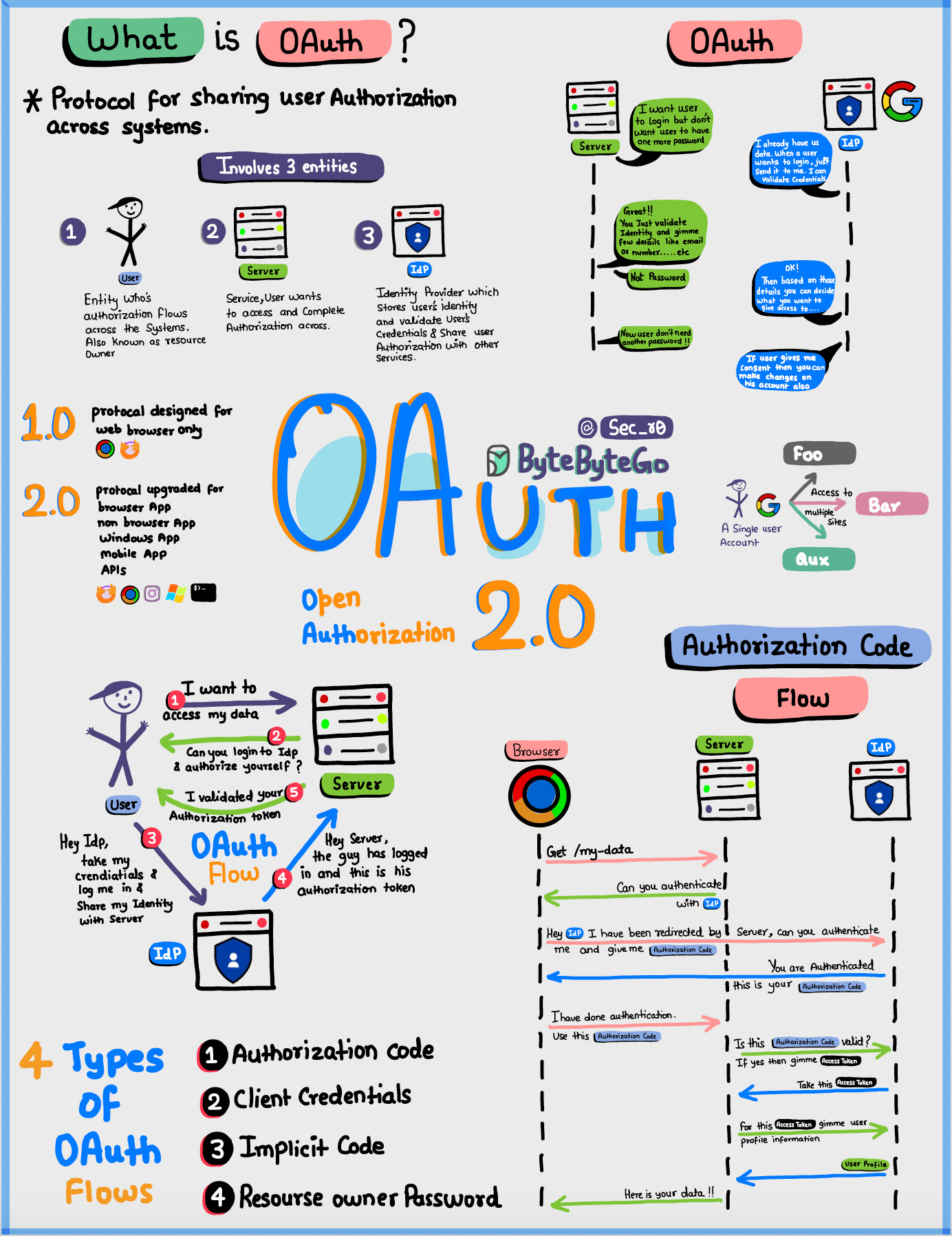



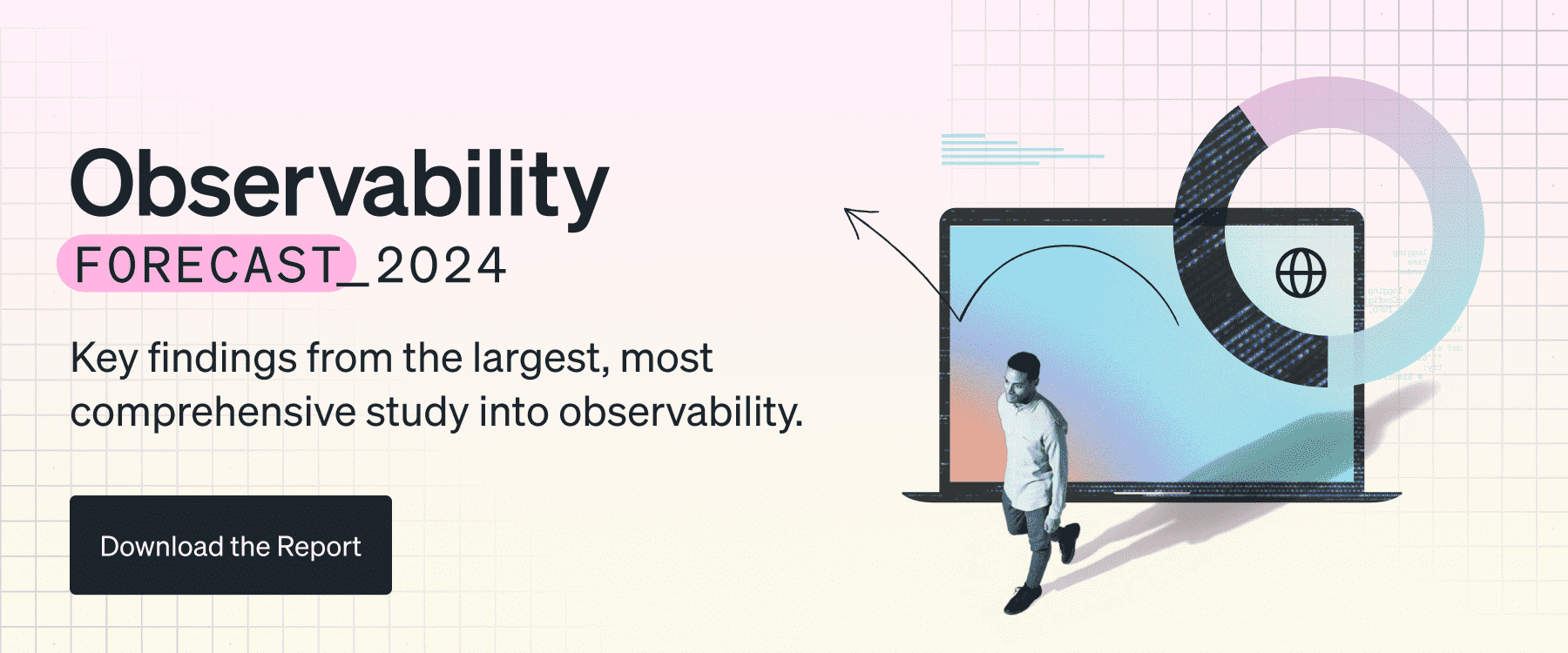
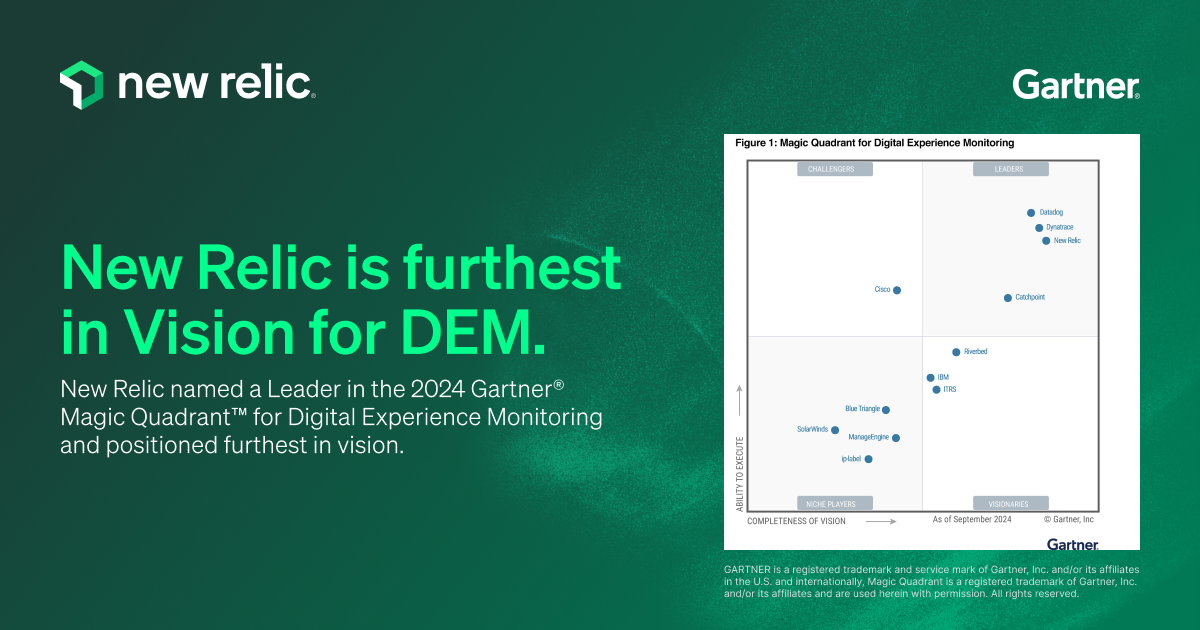
.png)






















